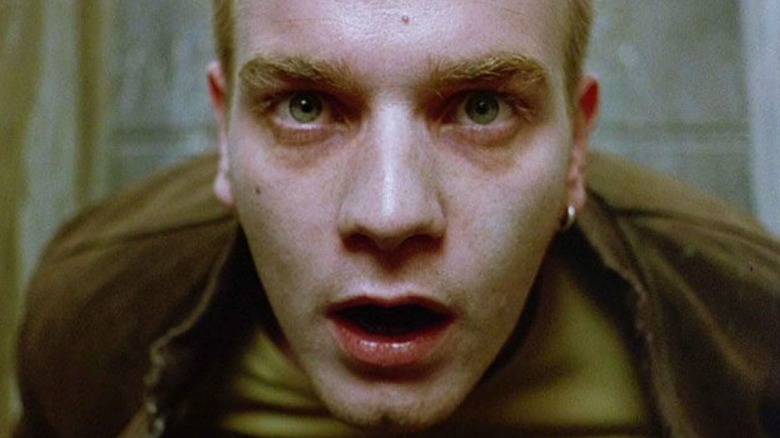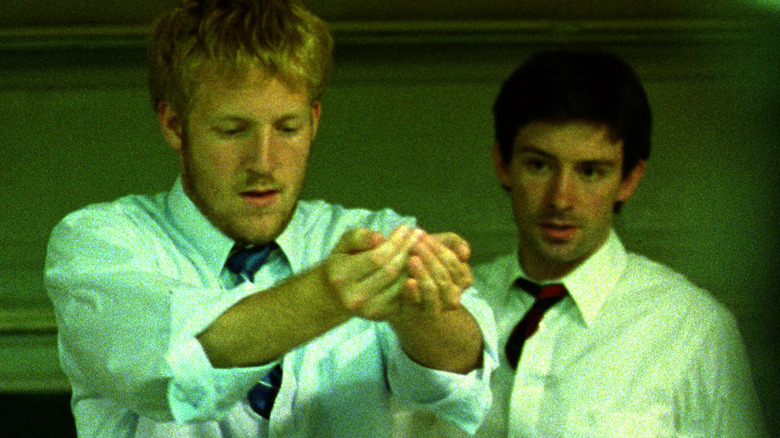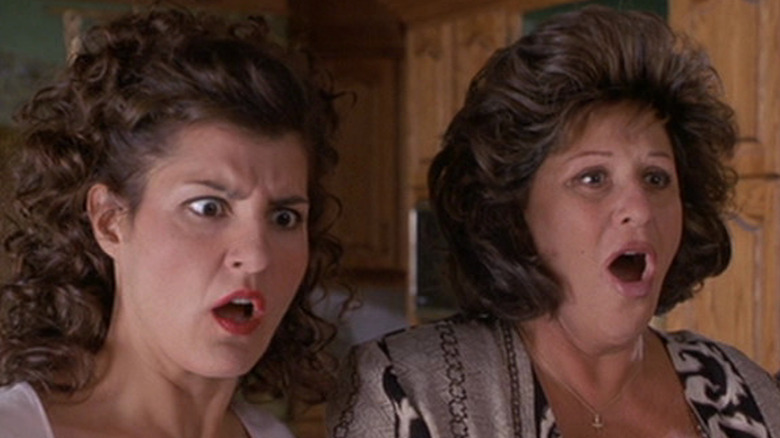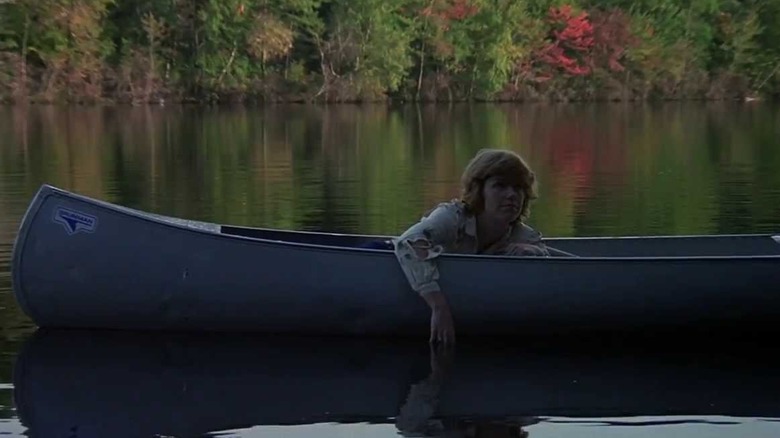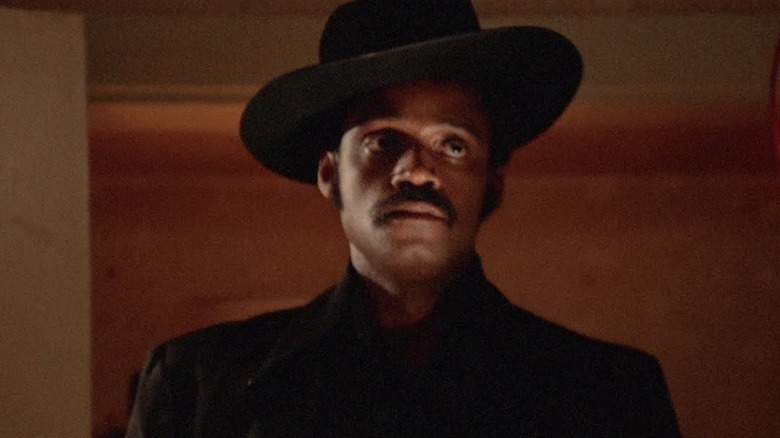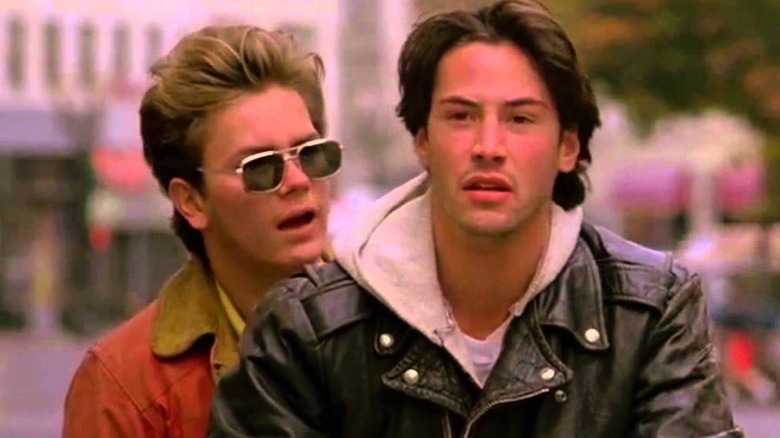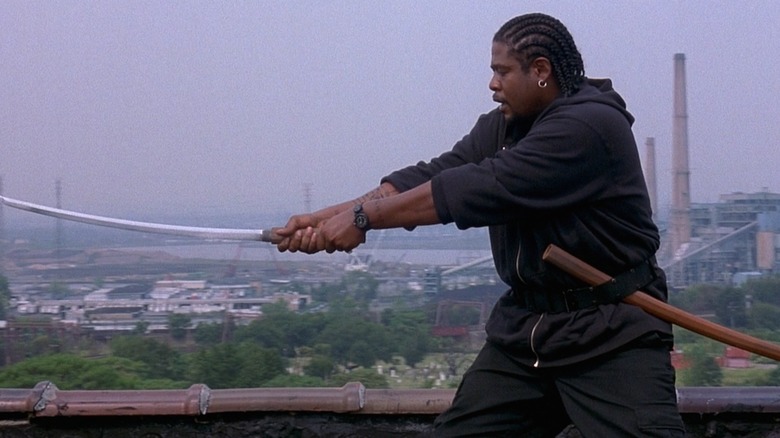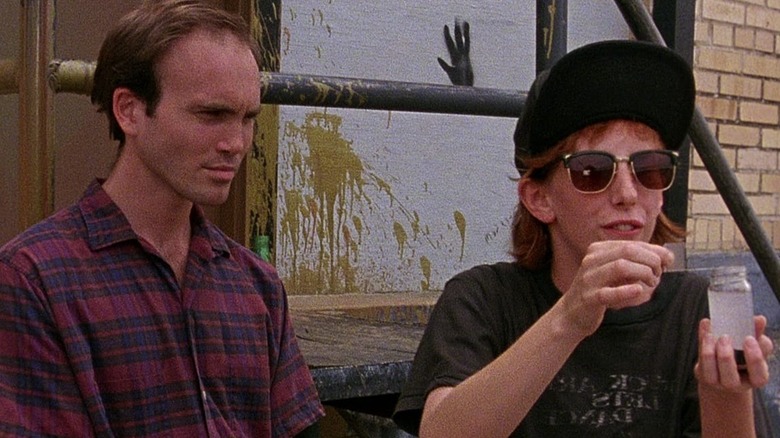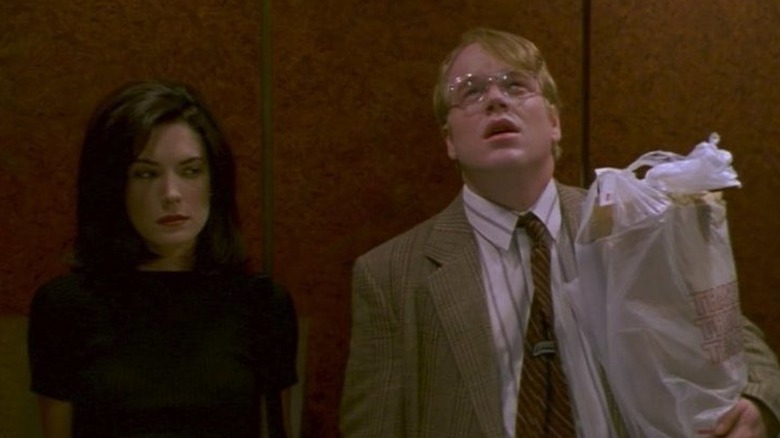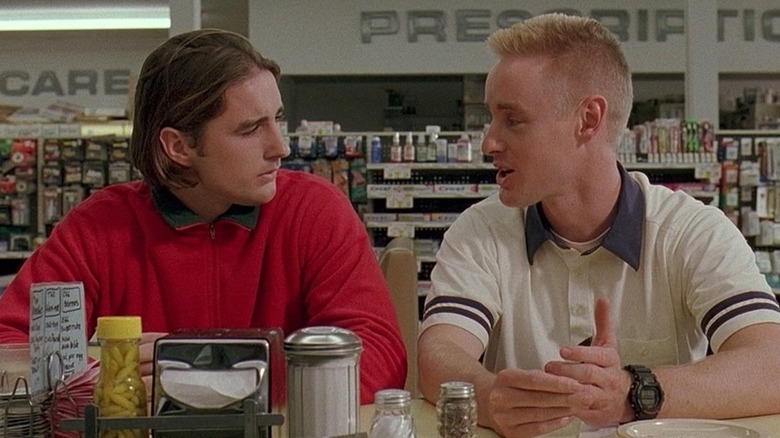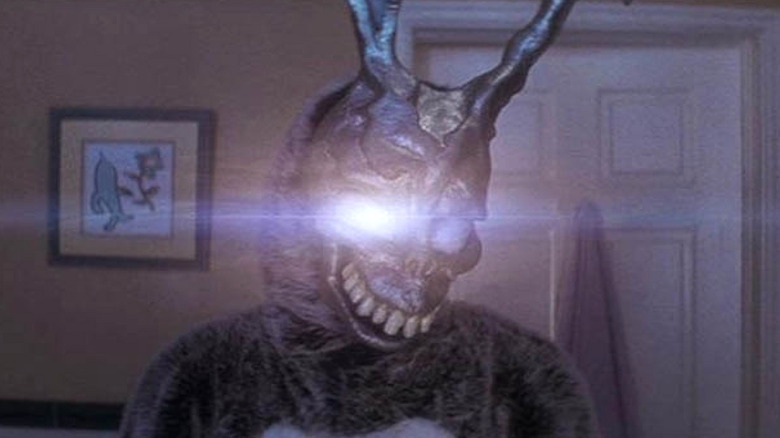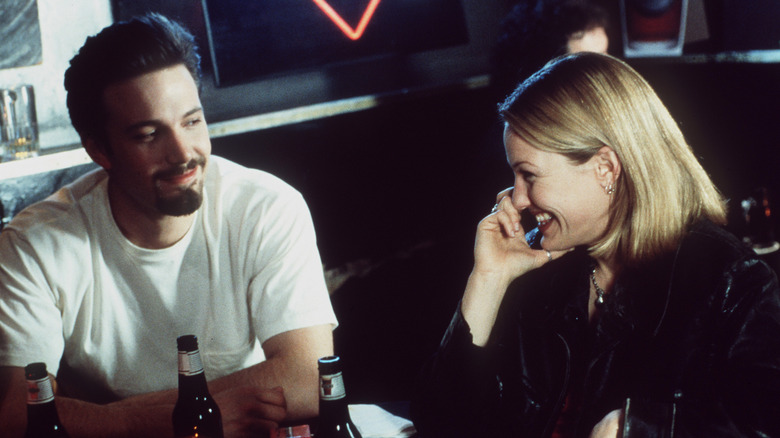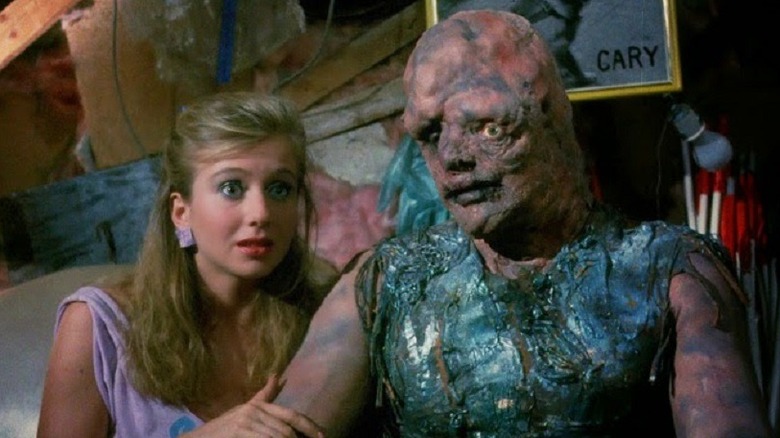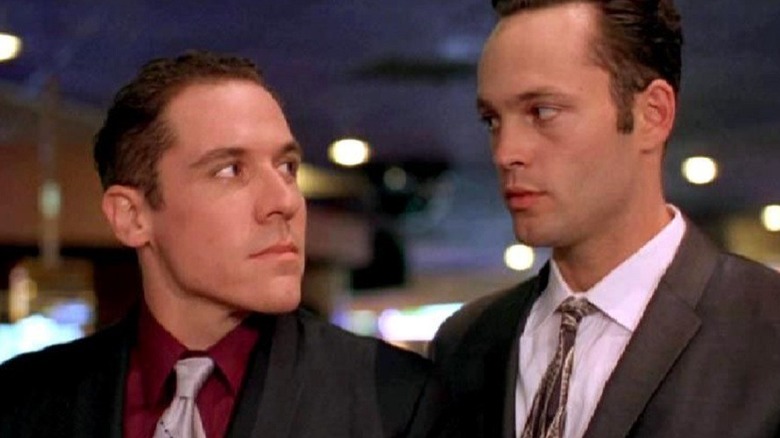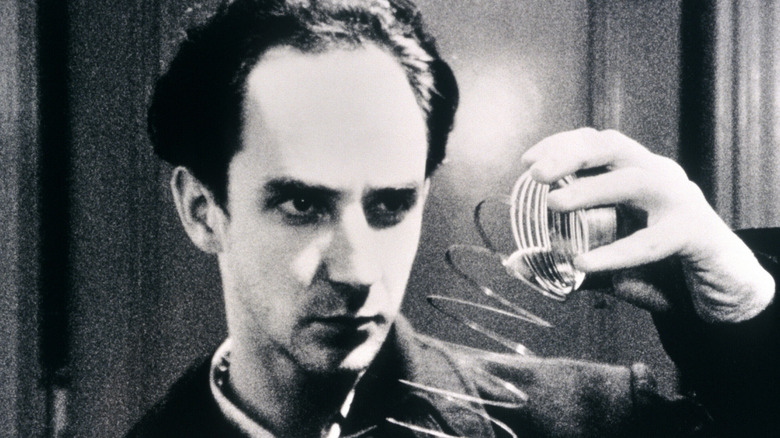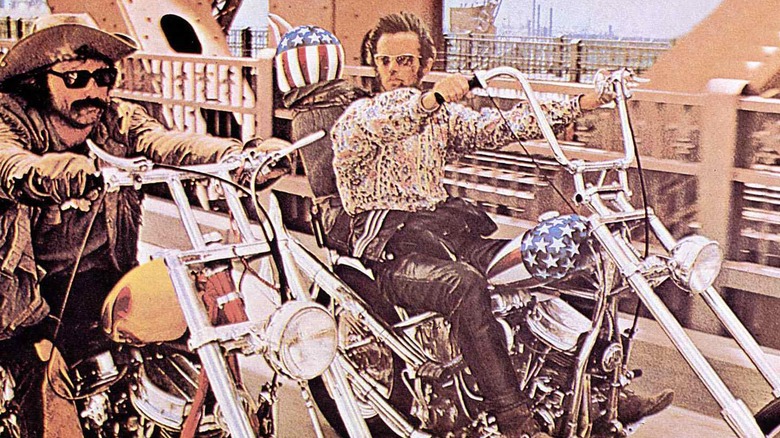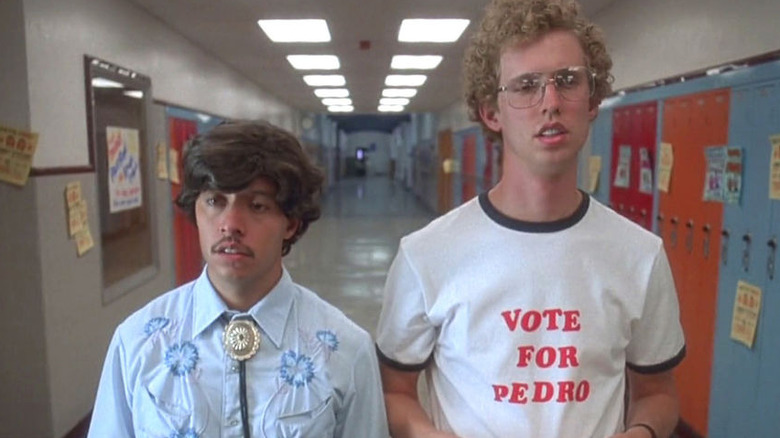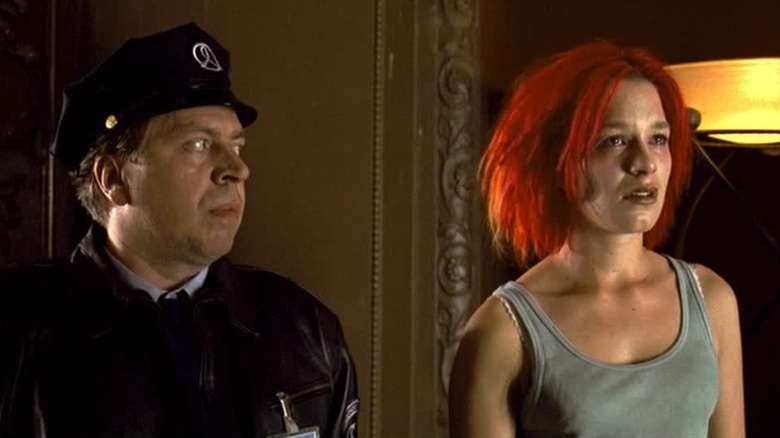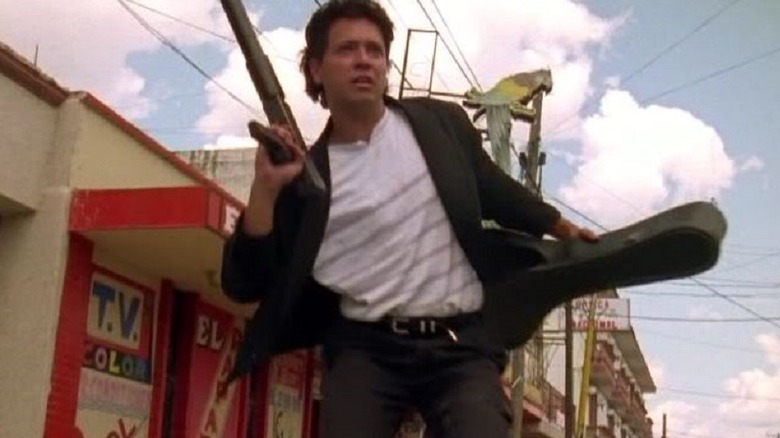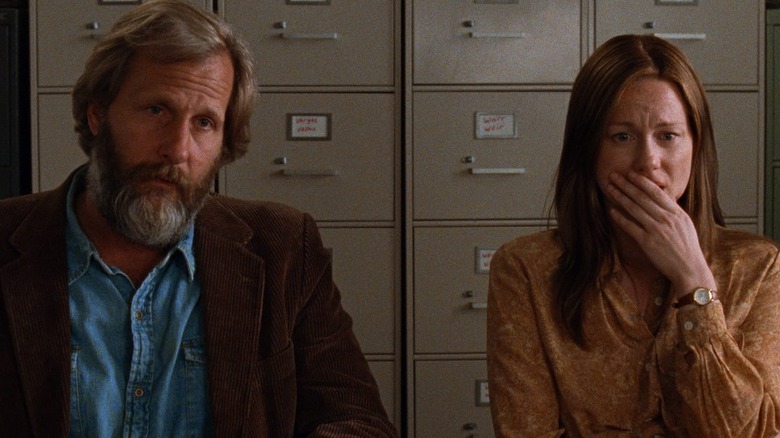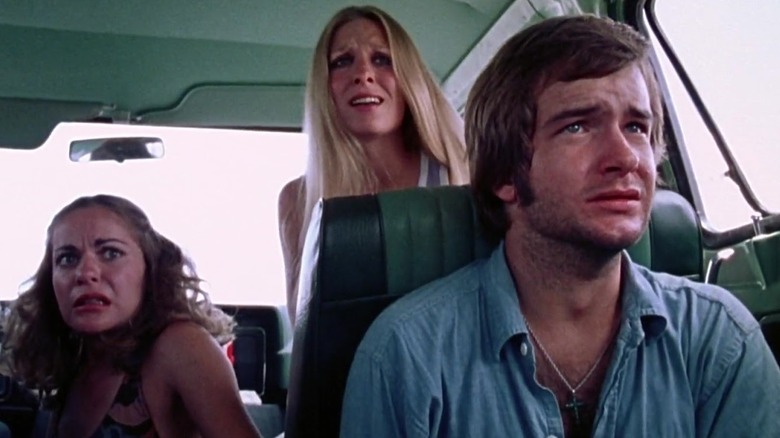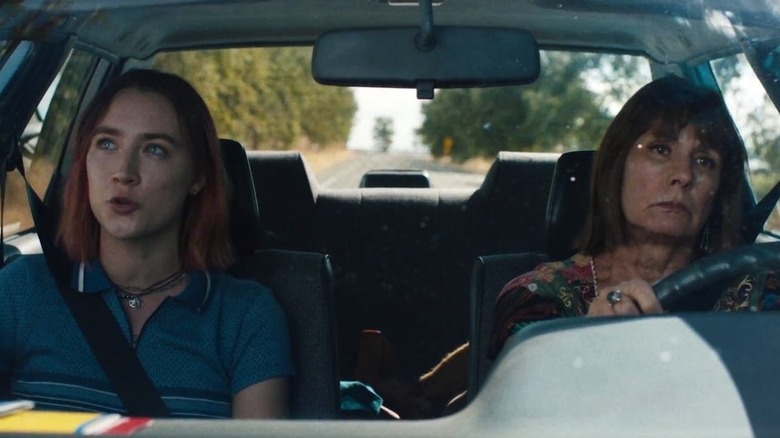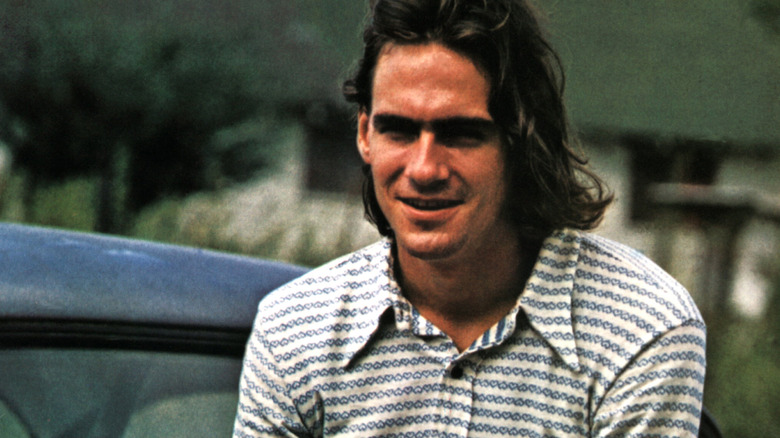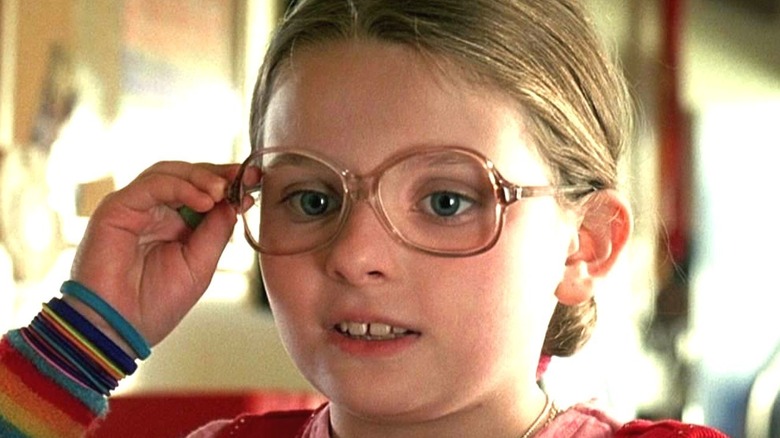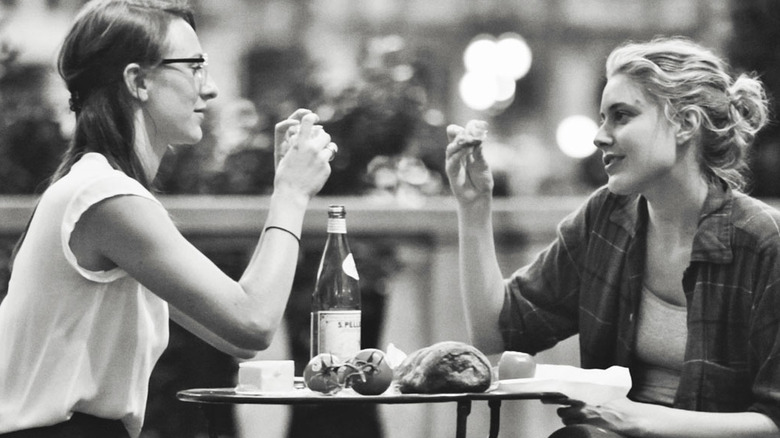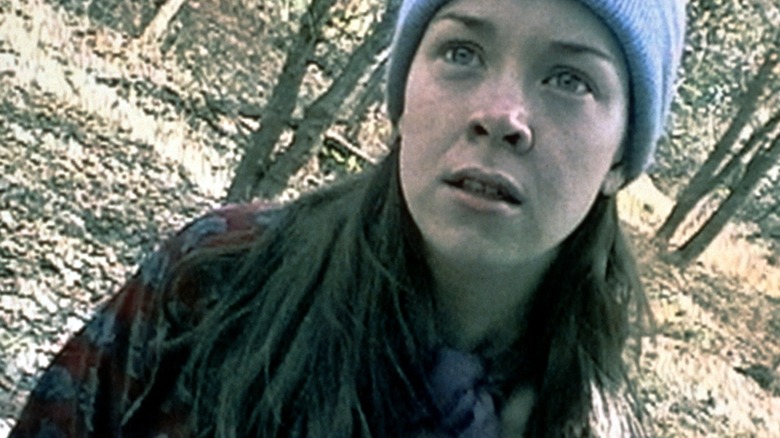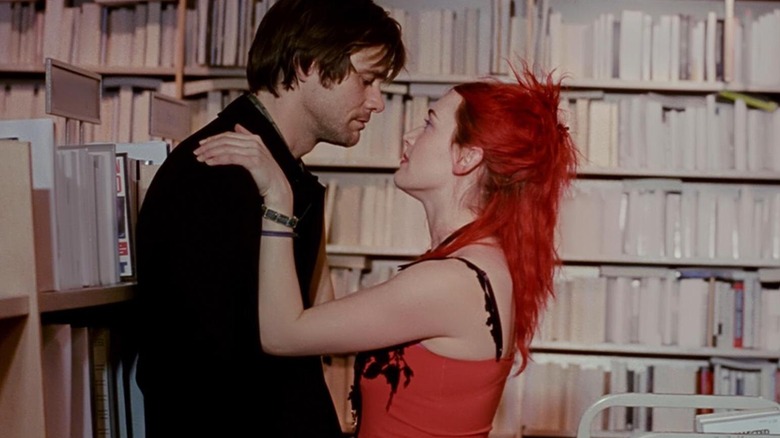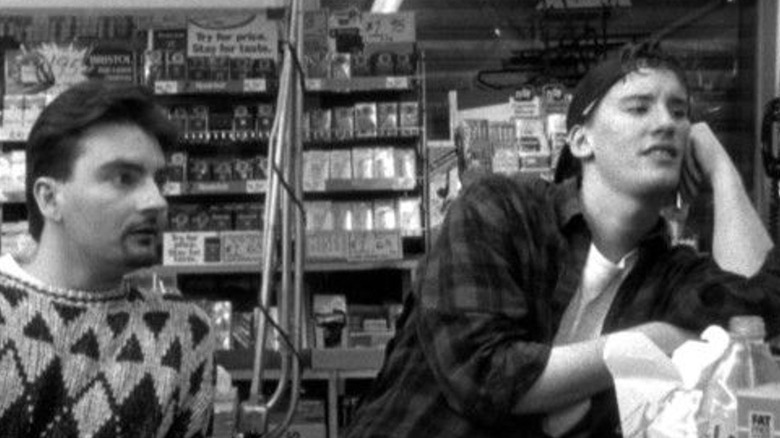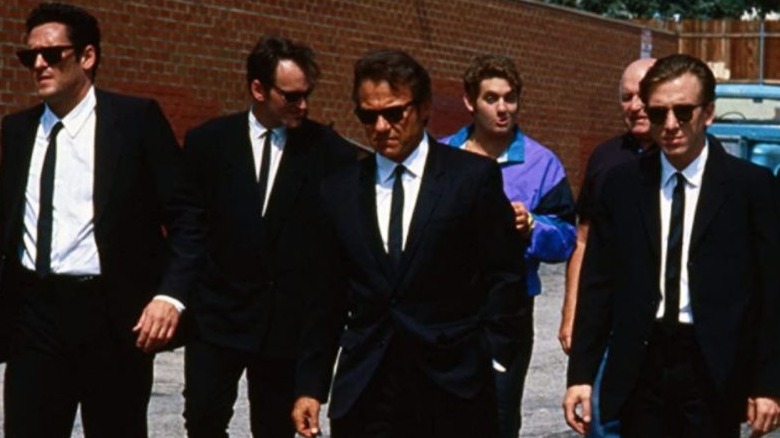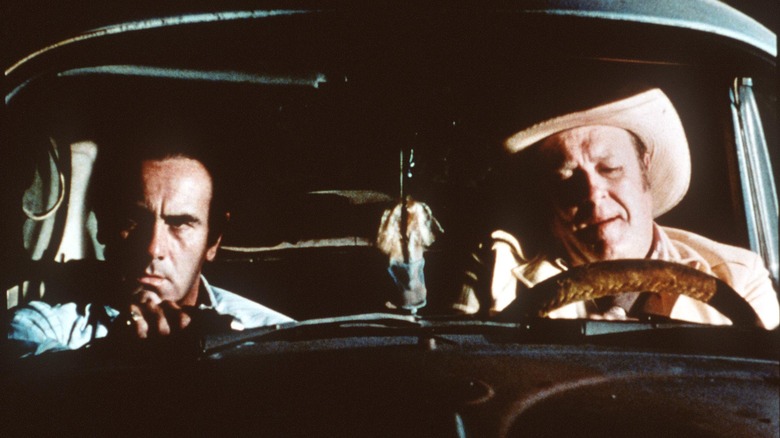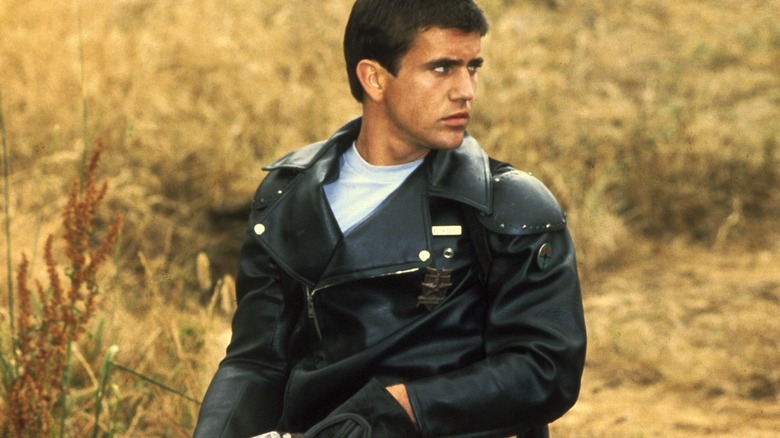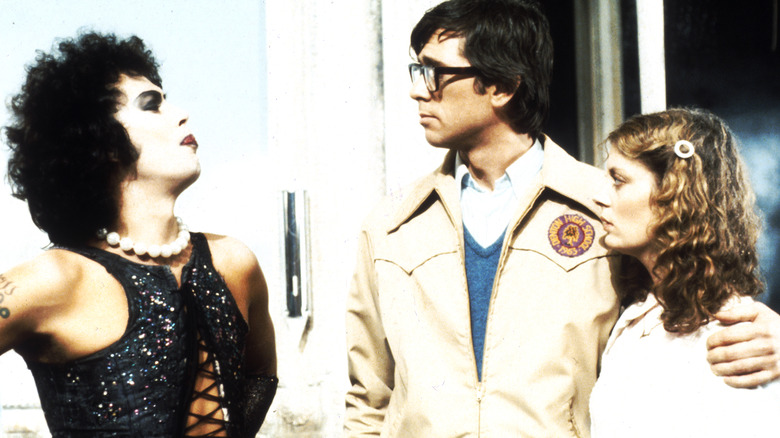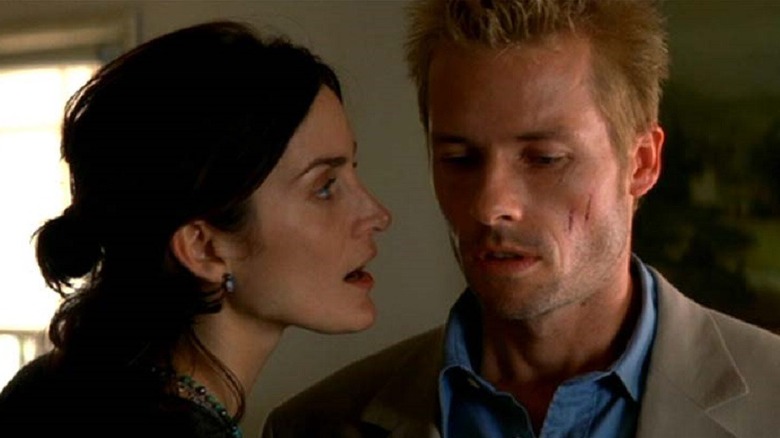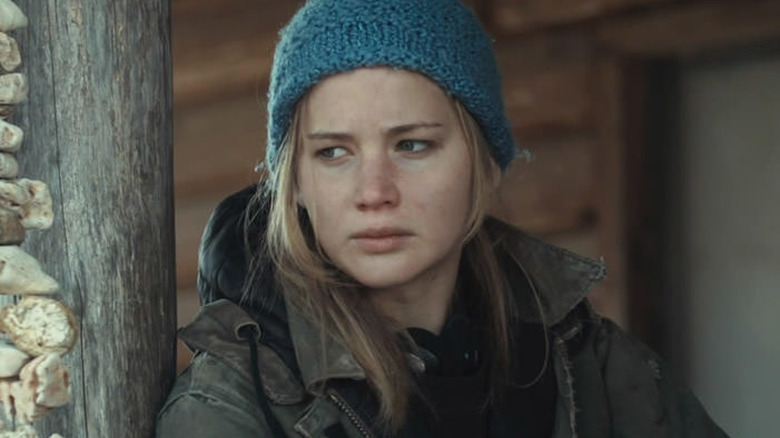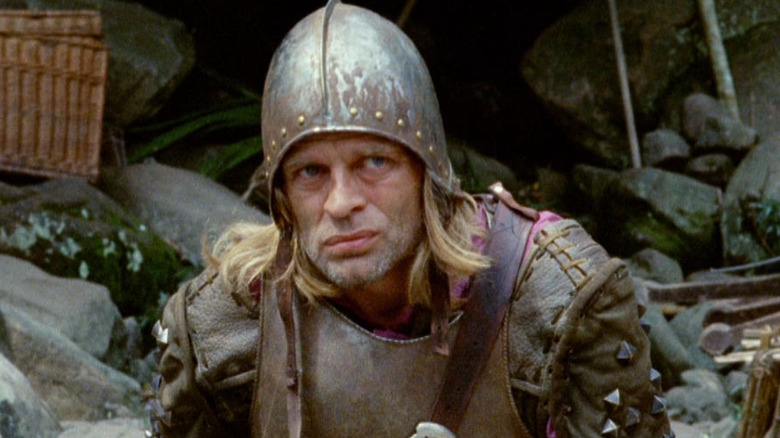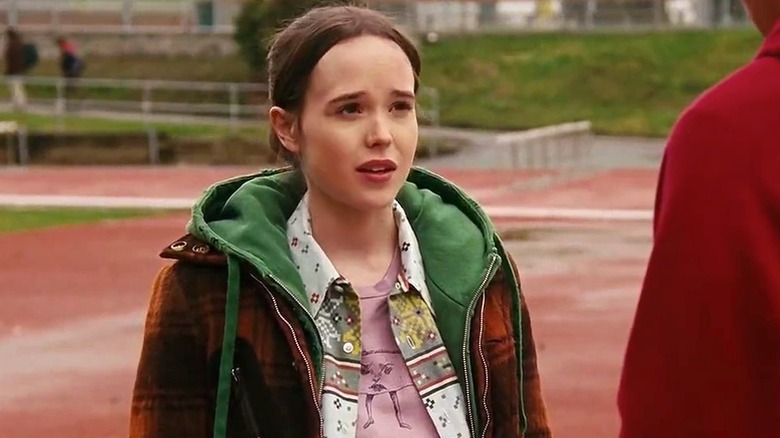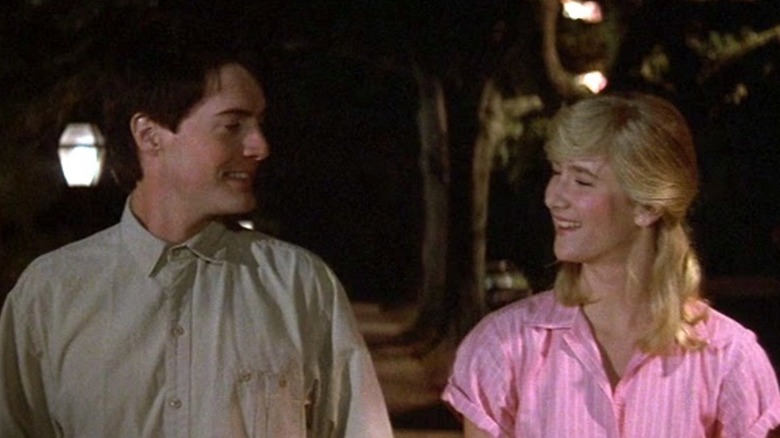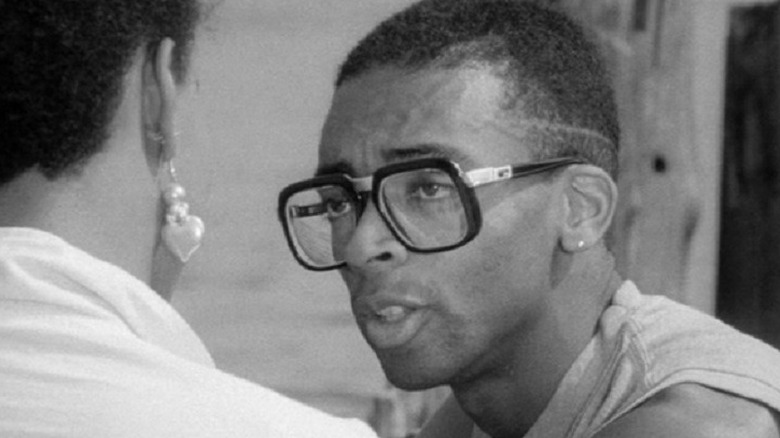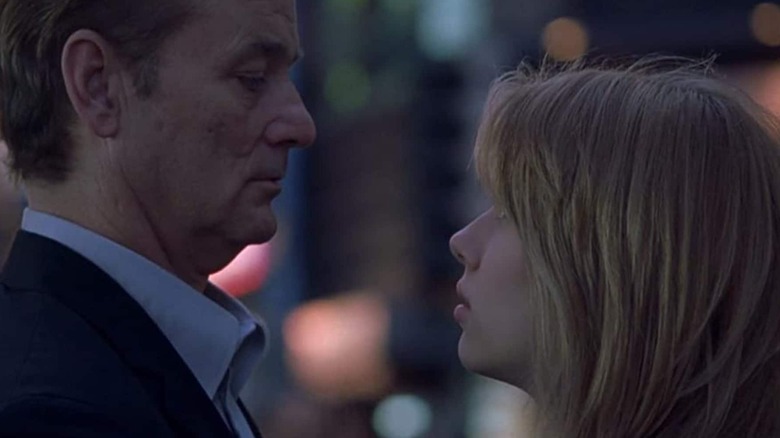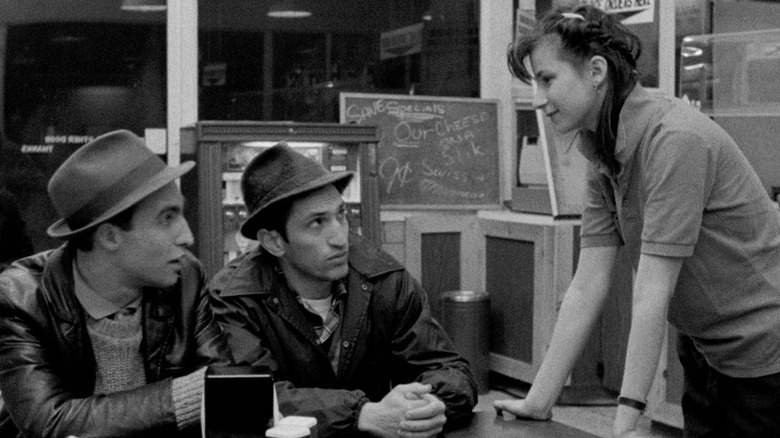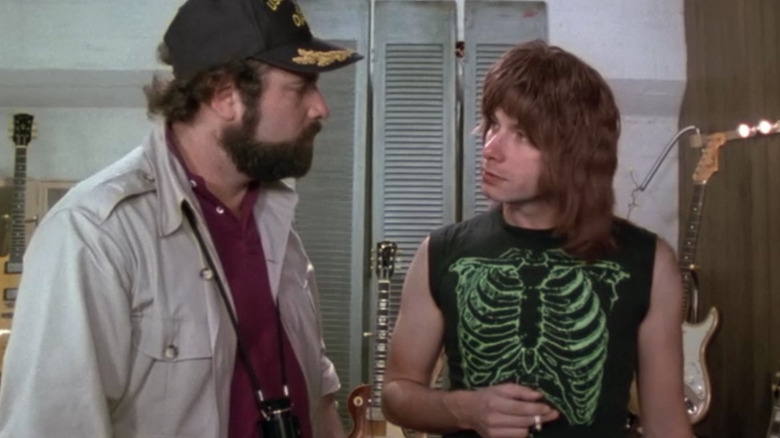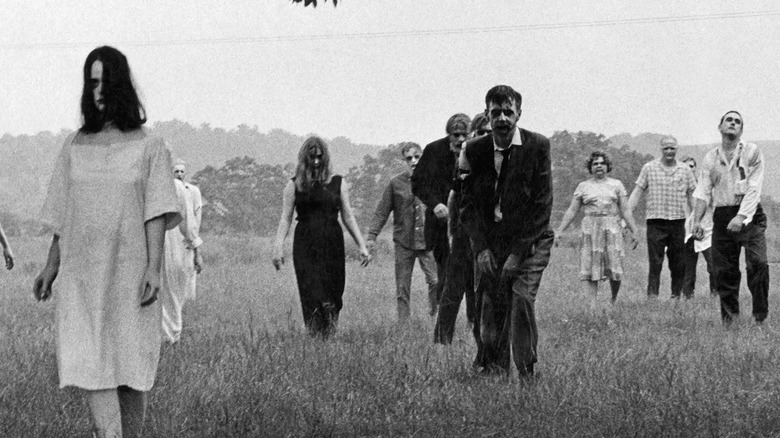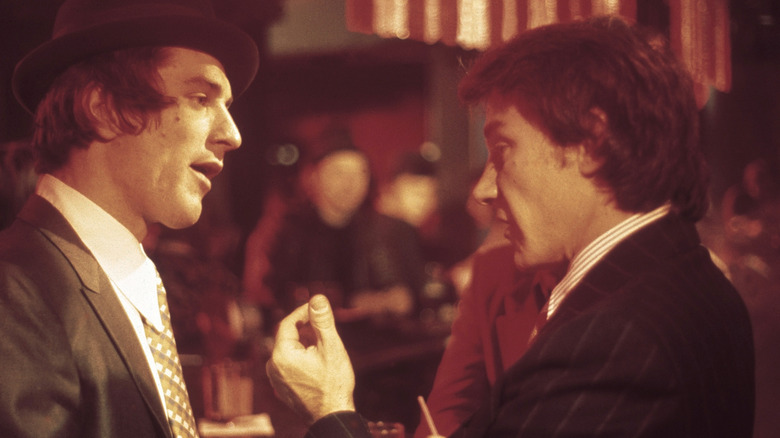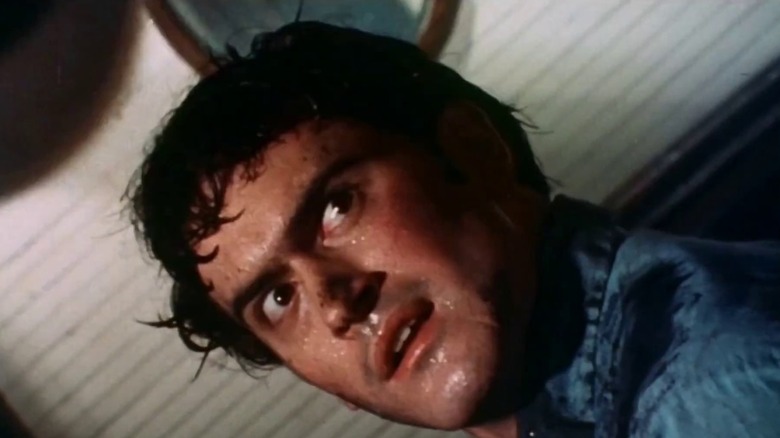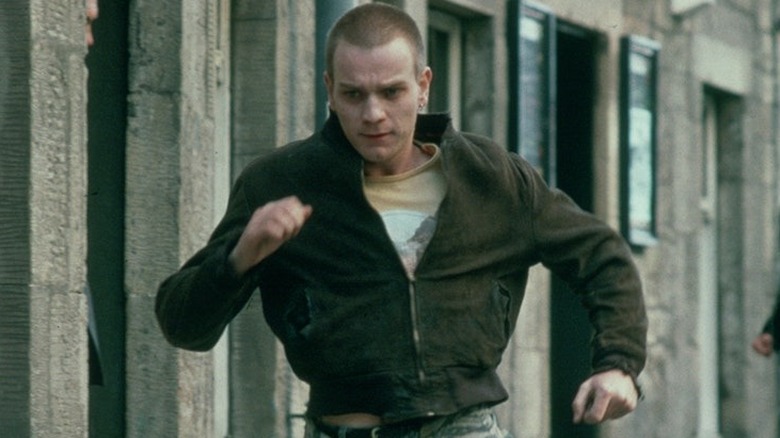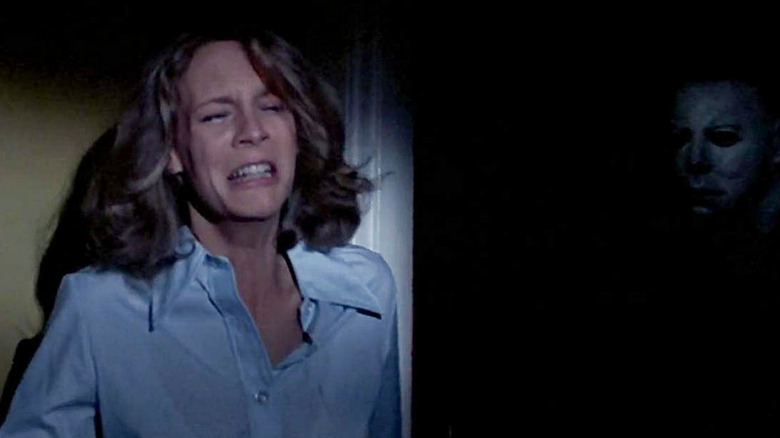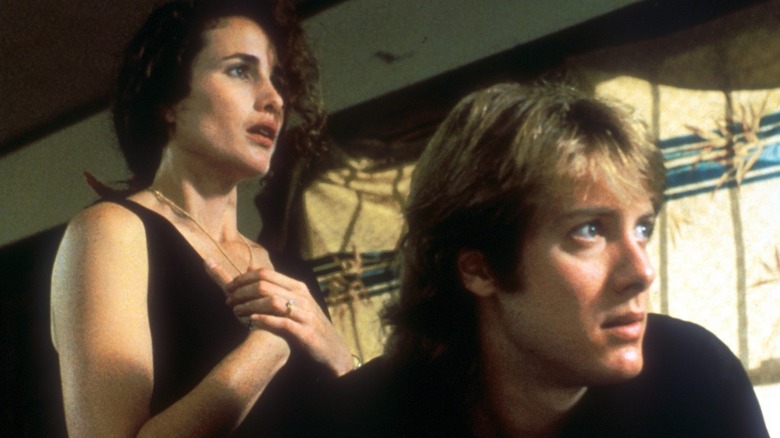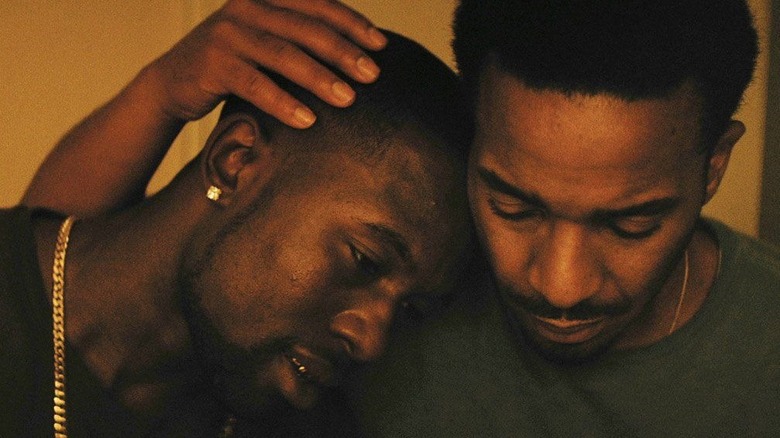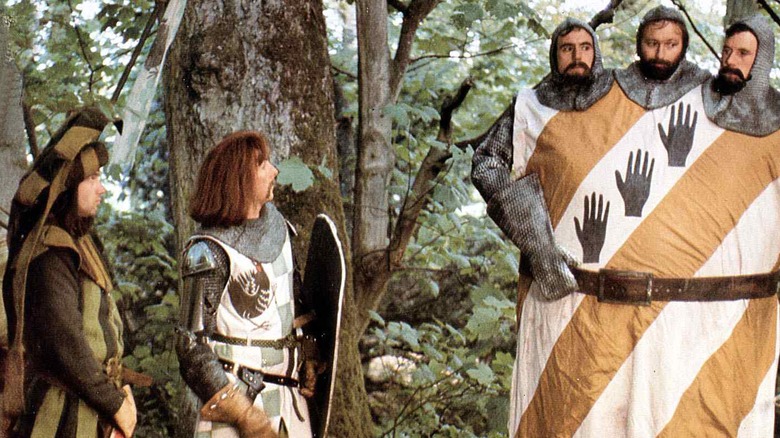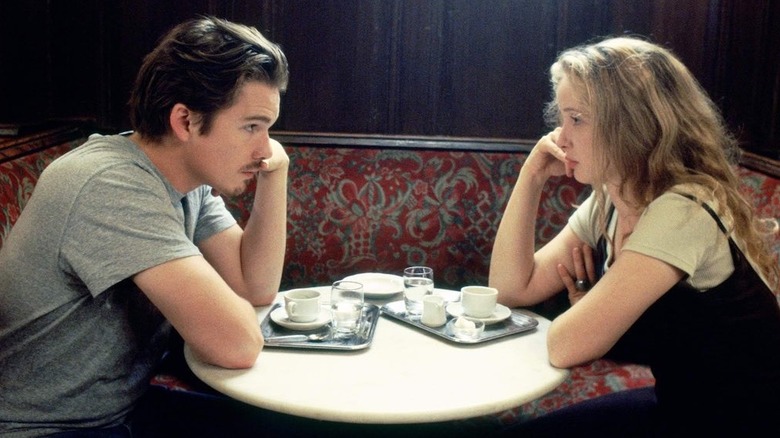50 Best Indie Movies Of All Time Ranked
The most basic, most widely agreed-upon definition of "indie movie" is any film made mostly without the help of a major studio. Many of them eventually have a studio sign on for distribution, but that doesn't automatically exclude a movie from being indie. The fact of the matter is that you generally need at least a little nudge from a major movie company if you want the final product to play in theaters or end up on one of the big streaming services.
That being said, as with music, the label of "indie" is sometimes applied to movies based purely on their content, style, or aesthetic. Wes Anderson movies are often described as "indie" even though he's been working well within the big studio system for most of his career — his films just have that quirky feel and that character-driven vibe that are typically associated with indie filmmaking. Things get further complicated when a lot of money is spent on a movie but it's the filmmaker's own money. Mel Gibson largely self-financed "The Passion of the Christ" (per The Hollywood Reporter), so it's technically an indie movie, but it's an indie movie that cost over $30 million to make.
When making a list like this, though, some ground rules need to be laid in order to keep things focused. So, for full disclosure, movies that were considered "indie enough" to be eligible for this list had to have their actual production be fairly low budget and be completed with little or no studio involvement. It's fine if a big studio got on board to distribute or even kick in a little funding on the home stretch, so long as it was primarily just to help the movie as it already existed get finished and released.
50. Primer (2004)
Much was made about how the indie psychological sci-fi film "Primer" was written and directed by an engineer with an advanced math degree who refused to dumb down any of the science and technical jargon in the script. Esquire summed it up thusly: "Anybody who claims he fully understands what's going on in 'Primer' after seeing it just once is either a savant or a liar." Indeed, had Shane Carruth — also one of the movie's two lead actors — taken his "Primer" script to a major studio, they would've forced him to overexplain everything that happens in the movie for a wider audience and completely ruin what sets it apart from the typical sci-fi/time travel movie.
Most time travel movies only work precisely because they lightly dance over the science and the finer details, preventing audiences from thinking about things too much and letting them just enjoy the ride. That "Primer" has the confidence to get down into the nitty gritty of things and not be afraid that the scrutiny will make the whole thing fall apart is astounding. If time travel actually existed, it would create moral conundrums the likes of which we as a species would not be prepared for, and "Primer" is one of the only movies to tackle that aspect of it.
49. My Big Fat Greek Wedding (2002)
It's hard to think of a movie that better demonstrates the concept of "sleeper hit" than "My Big Fat Greek Wedding." Its opening weekend gross didn't even crack $600K, but it would go on to bring in nearly $250 million on a mere $5 million budget. It's also worth noting that it's one of the highest-grossing movies of all time to never reach #1 at the box office, which suggests a movie with strong word of mouth and a small but steady audience flow over an extended period of time.
On its surface, "My Big Fat Greek Wedding" seems like a typical rom-com that takes the angle of two people from completely different worlds attempting to get married and start their life together. But what elevates it beyond that first and foremost is the performance of Nia Vardalos, who is an extremely charming lead and isn't the typical one-dimensional rom-com character. And the whole crux of the movie — that she has this huge, traditional Greek family — flawlessly walks the line of portraying them as eccentric while never having them go over-the-top to the point of feeling gimmicky.
48. Friday the 13th (1980)
Many, if not most, of the all-time great horror movie franchises began with a first installment that was a small independent production. In the case of "Friday the 13th," which introduced moviegoers to Pamela Voorhees, a grieving, knife-wielding mother stalking teens at Camp Crystal Lake, what would become a half billion dollar franchise was kicked off with a debut that was made for about $500K.
"Friday the 13th" was written and directed by Victor Miller and Sean Cunningham, respectively, who admitted that they started out just looking to rip off "Halloween" after it had been a huge success two years earlier (per Uproxx). The similarities are there, but "Friday the 13th" definitely evolved into its own thing, particularly with how much it ramped up the violence and gore. It would usher in a whole new era of slasher film, one in which the kills were not only plainly shown on screen but were done so with as much gushing and spraying blood as possible. And of course, the franchise would truly come into its own with the sequels that shifted the focus to Pamela's unkillable son Jason, and (eventually) his iconic hockey mask.
Among those violently murdered by a Voorhees in this debut outing is a character played by a then mostly unknown Kevin Bacon — four years before he danced his way into his first top-billed role in "Footloose."
47. Sweet Sweetback's Baadasssss Song (1971)
There is some contention as to what is the actual "first" blaxploitation film, but there's little denying that the genre got its proper start in 1971 with the releases of "Shaft" and "Sweet Sweetback's Baadasssss Song." However, as "Shaft" had the benefit of distribution from MGM, "Sweet Sweetback" definitely blazed the trail for the indie side of the blaxploitation movement, which arguably better represented the spirit of what blaxploitation movies were supposed to be about.
Melvin Van Peebles had his hand in every aspect of the production of "Sweet Sweetback," not only playing the title role but also writing, directing, editing, scoring, and co-producing the movie. Black Panther Party founder Huey P. Newton was so impressed with and affected by the movie that he even made it required viewing for every Black Panther member at the time (per MVPmovie.com). It was also groundbreaking from a technical perspective as well, as its use of split screens, freeze frames, jump cuts, and montages were all techniques that were still considered unusual at the time (via Full Frame Fest).
The opening scene of the film would see Van Peebles' son, Mario, play a younger version of Sweetback, which would later come full circle when Mario played his father in 2003's biopic "Baadasssss!" about the making of "Sweet Sweetback's Baadasssss Song."
46. My Own Private Idaho (1991)
Because River Phoenix died at just 23 years old, he was only able to play a few adult roles before his career and life were cut short. He had also already demonstrated a preference for unconventional projects, and in not jumping into the Hollywood machine. This was an especially brave path to take in 1991, when indie movies hadn't yet had their big '90s renaissance and were still often largely overlooked and barely played outside of small arthouse theaters.
But Phoenix starred in not one, but two indies that year: "Dogfight" and "My Own Private Idaho." In "Idaho," he and Keanu Reeves play friends stuck on a bad path who embark on a road trip of self discovery that of course doesn't have the happy ending you might expect — especially for Phoenix's character. As Roger Ebert pointed out in his review, "There is no mechanical plot that has to grind to a Hollywood conclusion, and no contrived test for the heroes to pass." The third feature film for writer-director Gus Van Sant, who perhaps doesn't get the credit he deserves for helping to usher in the '90s indie film era, "Idaho" earned raves for Van Sant as well as the two leads.
45. Ghost Dog: The Way of the Samurai (1999)
Though many of his peers would go on to do at least the occasional mainstream, big budget Hollywood film, writer-director Jim Jarmusch has staunchly remained an indie filmmaker throughout his 40+ year career. Even when one of his movies seems to be flirting with a more traditional format, such as the modern day samurai tale "Ghost Dog: The Way of the Samurai," it doesn't take long before those surface layers of normalcy peel away and reveal the trademark Jarmusch quirkiness underneath. Of course, in this case, the strange title should've given some of that away.
One of Jarmusch's greatest talents is in crafting unique and memorable characters, and the titular Ghost Dog is one of his best. Played by the always excellent Forest Whitaker, Ghost Dog has all of the elements of a classic Jarmusch character: He's often funny but is permeated by a deep well of melancholy, and he's stuck living in a world that he doesn't understand and that makes little effort to try and understand him back. As for the movie itself, like most of Jarmusch's genre pieces, "Ghost Dog" is both a love letter to and also at times a parody of crime/revenge films, and remains one of his most accessible movies — though, make no mistake, it's still super weird.
44. Slacker (1990)
Mainstream audiences first took notice of filmmaker Richard Linklater with his cult classic coming-of-age comedy "Dazed and Confused" in 1993, but those in the know where already fans of his thanks to 1990's "Slacker." Though his first feature film was technically "It's Impossible to Learn to Plow by Reading Books," released two years prior, that was barely a movie and felt like Linklater just teaching himself how to make a movie. But he put that experience to great use with "Slacker," which already had a surprising number of elements that would eventually become Linklater trademarks.
Linklater often experiments with the passage of time in his movies, something he took to ambitious extremes with his filmed-over-an-11-year-span drama "Boyhood." In "Slacker," he instead shows us a snap shot of the events of just a single day, following random people from one mundane conversation to another, all connected by a general malaise about the current social, political, and economic climate.
"Slacker" is often lumped in with "Sex, Lies, and Videotape" as two of the movies most responsible for leading the charge for the new generation of indie filmmakers at the time, solidified in part by Kevin Smith stating (per IndieWire), "'Slacker' film that got me off my a**," inspiring him to get to work on what would become "Clerks."
43. Happiness (1998)
It generally happens that a filmmaker makes indie movies first before eventually moving on to working with major studios. In the case of Todd Solondz, he went in the opposite direction — a fittingly unconventional start for a maker of extremely unconventional movies. Immediately offered a lucrative three-movie deal with 20th Century Fox right out of college entirely on the strength of his student films (per Collider), Solondz got to work on what would become "Fear, Anxiety, and Depression" and quickly became disenfranchised with how little creative control he had under the eye of studio bigwigs. So he took a few years off, licked his wounds, and reinvented himself as an indie filmmaker with 1995's acclaimed "Welcome to the Dollhouse."
Feeling emboldened by the positive feedback of "Dollhouse," Solondz followed it up with an even more challenging and boundary-pushing effort, 1998's extremely dark comedy "Happiness." The themes explored by "Happiness" were so controversial that the Sundance Film Festival rejected it completely (via CNN), and original distributor October Films dropped it despite having already helped to finance it (according to IndieWire). Indeed, anyone with any sort of sexual triggers should research what "Happiness" is about before they watch it (as should pretty much anyone, really). It's definitely not for everyone, but part of what makes indie films so important is that they allow for movies like this that will challenge (if not disgust) as many people as they will entertain, if not more so.
42. Bottle Rocket (1996)
While Wes Anderson definitely has the heart and the style of an indie filmmaker, he was making movies for Disney (by way of Buena Vista Pictures) almost right off the bat with his sophomore feature, "Rushmore." There's definitely no shame in that, and it's clear that he was given carte blanche to make whatever he wanted, as evidenced by the studio letting him make a movie called "The Life Aquatic with Steve Zissou." But he was a true indie filmmaker on his very first film.
That film was "Bottle Rocket," directed by Anderson and co-written with frequent collaborator Owen Wilson, who also brought along brother Luke in what would be the debut film for both actors. As an action comedy and crime caper film, it feels very different from the type of movie that Anderson has since become known for, and he hadn't yet developed that visual style that makes his movies instantly identifiable by almost a single frame. But the dialogue and the character work were already there in full force, even if Anderson was still figuring out what his directorial style was going to be.
None other than Martin Scorsese can be counted among the fans of "Bottle Rocket" — the legendary filmmaker called it one of his favorite movies of the decade and gushed about it in a tribute he wrote to Anderson for a 2000 issue of Esquire.
41. Donnie Darko (2001)
After nearly 20 years as an actor, Drew Barrymore finally waded into the production side of things when she co-founded Flower Films and got her first producer credit on "Never Been Kissed." While working on "Charlie's Angels," her second film as a producer, she had a meeting on the set with a filmmaker named Richard Kelly and ended up agreeing to finance his project through Flower Films (per Film Comment). That project: a little movie called "Donnie Darko."
Kelly's first feature film, "Donnie Darko," seemed to announce his arrival as the next big thing. The movie was praised for its complex time loop premise, the exploration of the troubled psyche of Donnie (an excellent Jake Gyllenhaal), and an overall tone and style that was unlike anything else at the time. It hit just as a new generation of budding film nerds were coming into their own, and they flocked to buy it on DVD which gave the film a second life and solidified its cult status (via NME).
Hollywood seemed to quickly sour on Kelly after "Darko" with the disastrous reception to his follow-up, "Southland Tales." Early champions continued to believe in him, however, with Kevin Smith comparing Kelly to Christopher Nolan (via The Hollywood Reporter). He just needs the big studio support Nolan gets to make the kinds of movies he wants to make and whatever budget he needs to make them.
40. Chasing Amy (1997)
While they both had their fair share of serious and even sentimental moments, both "Clerks" and "Mallrats" were comedies through and through. It wasn't until "Chasing Amy" that writer-director Kevin Smith finally made a movie that could justify adding the "drama" hyphenate to its description. While it still has its fair share of very R-rated humor — much of which revolves around body parts and their functions — "Chasing Amy" announced Kevin Smith maturing as not only a storyteller but also a filmmaker.
Smith saw before just about anybody else that Ben Affleck's acting talents went far beyond a rom-com leading man or Michael Bay action hero, and "Chasing Amy" sees Affleck first prove the kind of range that he rarely got to show outside of movies he wrote or directed himself until recent years. His chemistry with both Jason Lee and Joey Lauren Adams is electric, and the three of them bring to life one of the most fascinating and surprising love triangles in movie history. After the box office failure of "Mallrats," Smith took a break from trying to be the next Farrelly Brothers and made another smaller, more character-driven movie — and with that, he bounced back from his sophomore slump by knocking it out of the park.
39. The Toxic Avenger (1984)
Founded in 1974, independent production and distribution company Troma Films first made a name for itself with raunchy sex comedies. As documented by The Austin Chronicle, it wasn't until 1984's "The Toxic Avenger" that Troma first gave horror a shot — and with it, their niche had finally been discovered and they focused on B-movie horror almost exclusively going forward. Not only that, but "The Toxic Avenger" in particular would be the start of its own multimedia franchise, becoming so popular that it even spawned a kids cartoon called "Toxic Crusaders" in 1991.
As for the movie that started it all, "The Toxic Avenger" is the perfect example of how to do this kind of movie right. The effects are terrible, the violence and gore are beyond excessive, and the acting is a joke — but it all comes with a heaping helping of self-awareness, a lot of genuinely funny humor, and a clear sense that it's all been put together by a group of people who clearly have a deep affection for what they're making. The movie also manages to make legitimate, scathing statements on issues like crime, pollution, and political corruption — a layer that's there to dig into if you want to, but is never forced on you and entirely possible to ignore if you'd prefer to just enjoy the hilariously gross ride.
38. Swingers (1996)
It's hard to think of the guy who helped to lay the foundation for the Marvel Cinematic Universe and usher in the current era of live-action "Star Wars" TV shows as having ever been an indie anything. But indeed, years before he directed "Iron Man" or created "The Mandalorian," Jon Favreau had written and starred in a little indie comedy called "Swingers" that helped put both him and a baby-faced Vince Vaughn on the map to superstardom.
While many elements of the 1996 film are extremely of the era — in particular the focus on the swing music revival craze that was just getting going at the time — "Swingers" remains a fairly evergreen movie about starting over in a new city and getting back out there after the dissolution of one's first serious relationship. It's clear that Favreau and Vaughn are friends in real life, as their hilarious, rapid-fire banter had to largely be improvised and could've only been possible between two people with a genuine affection for and trust between one another.
"Swingers" also helped to put its up and coming director on the map — a guy named Doug Liman, who would soon after be directing big-budget hits like "The Bourne Identity" and "Mr. & Mrs. Smith."
37. Pi (1998)
Though it was in the 2000s that filmmaker Darren Aronofsky really made a name for himself with "Requiem for a Dream," "The Wrestler," and "Black Swan," his feature film debut came with 1998's "Pi." Drawing comparisons to the works of David Lynch, "Pi" is a complex and unsettling psychological thriller that has no qualms about making its audience confused and/or uncomfortable. It follows a mathematician who becomes consumed with the paradox of life being governed by both human imperfection and the strict guidelines of numbers and equations.
To finance the film, Aronofsky resorted to the age-old method of simply borrowing money from every friend and relative that would give him some (per The Washington Post). But that was only half the battle, as the post-production work on "Pi" required even more time and money than actually shooting it. As reported by Filmmaker Magazine, Aronofsky shot a whopping 23 hours of footage that then had to be edited down to what became the 84-minute final cut, not to mention all of the tricks and effects (like speeding up and slowing down the frames per second at certain points) that needed to be applied.
"Pi" also made history in that it was the first film to ever be sold via internet download (via The Wall Street Journal), a move that was years ahead of its time in 1999.
36. Easy Rider (1969)
Independent filmmaking started a lot earlier than many people realize, and not just in terms of small little black-and-white art films. The 1969 road movie "Easy Rider" was part of a new movement of American films at the time that followed the lead of the French New Wave, in that it was all about breaking away from traditional studio systems and embracing rebellion and the counterculture (per The New York Times). So-called avant-garde directors — in this case, actor Dennis Hopper in his lead directorial debut — were starting to be more embraced by mainstream moviegoers, and were making movies that weren't just weird, experimental films as had largely been the case previously.
"Easy Rider" was also noteworthy in that it finally helped to make a movie star out of Jack Nicholson, who had been a working actor for over a decade at that point but had yet to find his big breakthrough role. It also served as the culmination of Peter Fonda's role as one of the key figures in the counterculture movement of the 1960s (per The New York Times), and he largely resisted mainstream Hollywood roles for the rest of his decades-long career. Made for under $400K, "Easy Rider" would go on to gross $60 million worldwide, which is nearly $500 million when adjusted for inflation.
35. Eraserhead (1977)
Though student films aren't typically considered when discussing indie movies, "Eraserhead" gets a pass in that it only began as a student film, but took so long to make that David Lynch was no longer attending film school by the time it was finished (via Criterion). Often used as something of a go-to example for how weird indie movies can be — particularly by those making the statement with a negative context — "Eraserhead" is indeed a tough watch and is nearly impossible to fully understand without multiple viewings and reading other people's thinkpieces about it.
That said, "Eraserhead" benefited greatly from the rise of the midnight movie phenomenon that formed during the 1970s, and is mentioned alongside films like "The Rocky Horror Picture Show" and "Pink Flamingoes" as one of the films that helped birth that movement (per Rovi). While panned by many critics at the time, "Eraserhead" has since been reappraised and is now generally considered a classic film, one that The Online Film Critics Society said was second only to "Citizen Kane" in terms of the best debut films by great directors. Not bad for a surreal black-and-white movie that started out as a student project, took five years to make, and was called "sickening" and "murkily pretentious" by critics.
34. Napoleon Dynamite (2004)
Though it would eventually see both MTV Films and Paramount Pictures jump on board to help with distribution, the 2004 comedy "Napoleon Dynamite" was indeed an indie production in terms of actually making the film. Director Jared Hess — who co-wrote the movie with his wife, Jerusha — described the 23-day shoot to Rolling Stone as just "a bunch of friends getting together to make a movie," explaining that there was little room in the schedule or budget for more than a couple takes of each scene. Actor Jon Heder, who plays the now-iconic titular character, was just another of Hess' friends and initially accepted a mere $1,000 to star in the movie (via Stuff).
While "Napoleon Dynamite" goes through a lot of fairly standard beats for a teen comedy focusing on quirky social outcasts, it's the character work that really sets it apart from the pack. Heder's open-mouthed, eternally frustrated Napoleon immediately became one of the most quoted movie characters of the 2000s. The ensemble is rounded out by his older brother Kip (Aaron Ruell), his uncle Rico (Jon Gries), his new best friend Pedro (Efren Ramirez), and eventual girlfriend Deb (Tina Majorino). They're all just doing their best in a town that looks, feels, and acts like it's the 1980s despite the fact that the film's title sequence confirms it takes place in the present day.
33. Run Lola Run (1998)
It can be a tricky thing to base an entire film around a gimmick like the one that drives "Run Lola Run." The split-screen, entirely in real time 2000 movie "Timecode" is a prime example of how even with the most intriguing of gimmicks, the movie itself is not guaranteed to be compelling or fully worthy of its novel conceit. On the opposite end of that spectrum is "Run Lola Run," which sees a pivotal 20-minute stretch of time replayed over and over again with slight variations, and fully lives up to the promise of its premise.
The German thriller got a lot of traction in the U.S. at a time when foreign language films still carried a stigma with mainstream American audiences (via DMovies). This is no doubt due to how much the movie relies on action, music, and other visual and non-verbal audio cues to convey most of what's important in any given scene. And whenever it comes time for dialogue to really be paid attention to, the movie typically comes to a stop and there's more opportunity to read the subtitles and take in what's being said.
The international success of "Rum Lola Run" would also pave the way for star Franka Potente to cross over and appear in American films like "The Bourne Identity" and TV series like "American Horror Story."
32. El Mariachi (1992)
Other than just being pals and often helping each other out on their movies, one of the things that links filmmakers Quentin Tarantino and Robert Rodriguez is that they both released their feature directorial debuts in 1992. For Rodriguez, that debut was "El Mariachi," his Spanish-language modern-day western that would retroactively become the first film in his "Mexico Trilogy." While follow-up "Desperado" takes the foundation laid by "El Mariachi" and presents a slicker, more polished film with an admittedly superior lead in Antonio Banderas, critics still tended to see the sequel as a step down in overall quality from the original.
It's not just that "El Mariachi" has that scrappy, held-together-by-duct-tape charm of an indie movie on a shoestring budget. Compared to "Desperado" and much of Rodriguez's later action films, "El Mariachi" still feels like a movie that was actually part of a genre rather than just being a winking tribute to a genre. While Tarantino would go on to make several movies that definitely surpassed his first one, there is some consensus that — at least among his non-kid movies — "El Mariachi" remains Rodriguez's masterpiece.
31. The Squid and the Whale (2005)
1995's "Kicking and Screaming" — no, not the soccer movie with Will Ferrell and Mike Ditka — was to writer-director Noah Baumbach as "Bottle Rocket" was to Wes Anderson: an imperfect debut film, but one that was clearly announcing a new talent primed to do great things. And speaking of Anderson, the two would eventually become occasional collaborators, first as co-writers on "The Life Aquatic with Steve Zissou" and then following that up a year later with Anderson producing Baumbach's "The Squid and the Whale."
"The Squid and the Whale" announced the true arrival of Noah Baumbach as one of the best and most consistent filmmakers of the last 20 years. It's also one of the most raw and honest explorations put to film of divorce and what it does not only to the family itself but to some of the people in their general orbit. Co-leads Jeff Daniels and Laura Linney are excellent, of course, but it's also worth pointing out the near-career-best performances of Anna Paquin, Jesse Eisenberg, and even William Baldwin — proving that he can be terrific when given the chance. One sign of a great indie filmmaker is their ability to both see and utilize the talent in an actor who is frequently undervalued by Hollywood.
30. The Texas Chain Saw Massacre (1974)
It seems like it's rebooted every five years or so, and some have definitely done it better than others. But the original "Texas Chain Saw Massacre" was so well executed and such a product of a specific time and place in movie history that it will be impossible to ever truly surpass it, no matter how much A-list talent or big studio money you throw at it. If you were to go down the list of all the things that would soon become standards of the slasher genre — a faceless, hulking villain; attractive teenagers and young adults as the victims; bad luck preventing otherwise easy means of escape; and the use of common household power tools as weapons — you'll find that it all pretty much started with Tobe Hooper's 1974 classic.
Cleverly marketing the movie as based on a true story even though it was only very loosely inspired by serial killer Ed Gein, "Massacre" set the discomfort level in the audience high long before anyone stepped foot in a theater. And that proved difficult, as many theaters pulled the movie or refused to show it altogether due to its violent content. Still, despite that and the fact that initial critical reception was lukewarm at best, "Massacre" proved extremely successful — earning about $30 million on a budget of less than $150K.
29. Lady Bird (2017)
After a decade of mostly only being a screenwriter (sometimes alongside partner Noah Baumbach) and only being a co-director on 2008's "Nights and Weekends," Greta Gerwig finally went fully solo on writing and directing with "Lady Bird." The 2017 coming-of-age dramedy stars Saoirse Ronan as the title character (well, technically it's a nickname) and the always amazing Laurie Metcalf as her long-suffering mother. And with it, Gerwig proved that she's more than capable of handling things as a filmmaker all by herself.
"Lady Bird" earned much-deserved Academy Award nominations for Ronan and Metcalf, as well as Gerwig for both writing and directing. It was also so well received by critics that it is the current record holder for longest amount of time a movie maintained its 100% rating on Rotten Tomatoes, beating out previous record holder "Toy Story 2" (per Entertainment Weekly). That Gerwig's next movie is a rom-com based on the Barbie toyline (that she's co-writing with Baumbach) seems like an odd choice, but if there's one filmmaker that we will give the benefit of the doubt to in terms of a Barbie rom-com, it's Greta Gerwig.
28. Two-Lane Blacktop (1971)
Also appearing on our list of the 50 best racing movies of all time, "Two-Lane Blacktop" deserves to be put on as many lists as it's eligible for. Maybe we'll do a list of best non-musical movies that star musicians just so we can put it on yet another list. The underrated 1971 road movie stars not only folk singer-songwriter James Taylor but also late Beach Boys drummer Dennis Wilson, playing characters known only as The Driver and The Mechanic, respectively. And that says pretty much all there is to say about the kind of movie "Two-Lane Blacktop" is, relying heavily on metaphor and having each character play a very specific role in the story.
Ironically, though it stars multiple musicians, "Two-Lane Blacktop" is not nearly as musically-driven as contemporary indie road movies like "Easy Rider" or 1971's "Vanishing Point." It didn't even have an official soundtrack release, despite a hit soundtrack album being a major part of the legacy of "Easy Rider" in particular (per The Los Angeles Times). However, it's worth noting that the film uses Kris Kristofferson's version of "Me and Bobby McGee," a song that he wrote but hadn't yet recorded a version of himself — though Janis Joplin's forthcoming cover would soon become the song's fourth and most definitive version (via Rolling Stone).
27. Little Miss Sunshine (2006)
Although indie movies are known for going the bittersweet — if not outright tragic — route when it comes to depicting families, "Little Miss Sunshine" was not afraid to let its dysfunctional family enjoy a happy ending that saw them all literally dancing together. After all, there is no rule that says indie movies have to be dark or sad, and it's great that there are entries like "Little Miss Sunshine" to carry the banner for that fact.
"Little Miss Sunshine" is the feature film debut of husband-and-wife directorial team Jonathan Dayton and Valerie Faris — music video directors who had been working almost exclusively with the Red Hot Chili Peppers in the few years leading up to the project. The movie helped to kick off a shinier, happier era of indie films that would pave the wave for movies like "Juno." It also served as a breakthrough for both Abigail Breslin and Paul Dano, showed that Steve Carrell could play melancholic, and earned Alan Arkin his first Oscar in nearly 40 years.
All this from first-time screenwriter Michael Arndt, who proved he was far from being a one-hit wonder with later work on both "Toy Story 3" and "Star Wars: The Force Awakens."
26. Frances Ha (2012)
Though the Ben Stiller-led comedy "Greenberg" is one of Noah Baumbach's lesser films, it's where he would meet future collaborator and partner Greta Gerwig. And it wouldn't take long before the two would demonstrate what was possible when they joined forces creatively, as only two years later they would release the excellent "Frances Ha." Co-written by Baumbach and Gerwig and starring Gerwig in the title role, "Frances Ha" sees them both really showcasing their respective talents with multiple extended single-take scenes of Gerwig dancing through the streets of New York City.
Much praise was heaped upon "Frances Ha" for a variety of reasons. Mic's Sarah Galo applauded its "daring" depiction of female friendship, Alonso Duralde of The Wrap was impressed by the way it Frances is "neither coddled nor punished," and Stephanie Zacharek of Riverfront Times appreciated the movie's more nuanced, less shocking for the sake of shocking portrayal of aimless twentysomething women in NYC as compared to the HBO series "Girls" that had just started airing at the time.
25. The Blair Witch Project (1999)
The viral marketing campaign for "The Blair Witch Project" could've only been possible before the era of social media and our current world where you're only guaranteed not to have a movie spoiled for you by the internet if you see it at its initial midnight screening. As chronicled by SyFy, there was a lot of mystery surrounding the movie, with the general public not quite knowing if the movie was "real" or not. Found footage movies weren't a genre unto themselves yet, so the commercials that featured unknown actors being filmed in the woods with a shaky video camera looked like ads for self-shot amateur video rather than scenes from a movie.
The group of people that were lucky enough to see "The Blair Witch Project" in theaters in those first few weeks got to experience something truly special, indeed. While it still remains an extremely effective horror movie even once you know it's not real, being able to experience it completely untainted by that confirmation just elevated it to the next level. It's also a rare horror movie that was just as, if not more, effective at home than at the theater as that plays into its home video style.
"The Blair Witch Project" remains one of the most profitable movies of all time in terms of production costs vs. box office gross — with its closest competitor, not coincidentally, being "Paranormal Activity" (via The Hollywood Reporter).
24. Eternal Sunshine of the Spotless Mind (2004)
After having started so strongly in film with "Being John Malkovich," writer Charlie Kaufman spent a couple of years struggling to figure out what kind of screenwriting career he was going to have. Follow-up "Human Nature" was a quirky but ultimately subpar sophomore effort, and adapting Chuck Barris' obviously exaggerated autobiography "Confessions of a Dangerous Mind" proved to be a bad fit. Luckily, the same year as "Confessions" also saw the release of the brilliant "Adaptation," a semi-autobiographical movie about how Kaufman set out to adapt a book called "The Orchid Thief" but ended up writing a movie about himself struggling to adapt "The Orchard Thief" while also still somehow adapting it at the same time. It's the Charlie Kaufman-est movie that ever Charlie Kaufman-ed.
But two years later, Kaufman would release what remains his masterpiece: "Eternal Sunshine of the Spotless Mind." Directed by whimsical genius of practical and in-camera effects Michel Gondry, "Eternal Sunshine" stars a top-of-his-game Jim Carrey as Joel, who has to deal with ex-girlfriend Clementine (Kate Winslet) having undergone a procedure that literally erased him from her memory. He bitterly seeks out the same procedure, but changes his mind halfway through and attempts to fight the erasure from within his own brain. When the movie's opening scenes turn out to have taken place after both lovers had already forgotten each other, you realize that a second viewing is required to get the surprising and bittersweet full picture.
23. Clerks (1994)
Is there anything more indie than literally filming your movie in the off hours of the actual convenience store you work at during the day? That's what Kevin Smith did with "Clerks," using credit cards to pay for most of the $30,000 production budget of his debut comedy (per Dazed). Neither the setting nor the setup are anything special, but "Clerks" succeeds entirely on Smith's snappy dialogue and the surprisingly solid performances of its two complete amateur leads.
Sure, the fact that the movie contains so much vulgarity that it almost got an NC-17 rating for dialogue alone (via View Askew), coupled with the characters' tendency to have philosophical discussions about things like "Star Wars," went a long way in helping the movie become a cult hit with teen and twentysomething dudes. But there are plenty of movies full of dirty jokes and nerdy references that don't launch entire cinematic universes, so there's definitely a lot more to "Clerks" than that.
There are a lot of movies about the rich and the beautiful, and there are a lot of movies about the poor and the beaten down, but there's an entire area in between of middle class, middle American people who don't have exciting or tragic enough lives to have movies made about them. Unless, of course, those movies are written by someone like Kevin Smith.
22. Reservoir Dogs (1992)
Quentin Tarantino has been such a looming presence in Hollywood for so long now that it's easy to forget his humble beginnings as an unknown indie filmmaker. In fact, his debut film actually didn't make that much of an impact when it first hit theaters in 1992. However, as The New Yorker reports, when Tarantino followed it up with "Pulp Fiction" two years later and people found out it wasn't his first movie, they were eager to go back and see what they had missed with "Reservoir Dogs." Some found a movie that was actually superior to its successor, but that's a matter of opinion.
Not many debut movies from an indie filmmaker come as fully-formed with so many of the filmmaker's touchstones right out of the gate, but "Reservoir Dogs" stands as a much more polished and better-aged first movie than most directors manage. While debuts like "Bottle Rocket," "Pi," and "Slacker" stick out as very obvious rough drafts to what the careers of their respective filmmakers would become, "Reservoir Dogs" can still stand toe to toe with almost any subsequent Tarantino movie. And while that might seem to be suggesting that his later movies simply weren't as good as his explosive debut, it's not that at all — it's really just a testament to how shockingly good "Reservoir Dogs" was and still is.
21. Blood Simple (1984)
The Coen Brothers feel like they've just always been there, but they did indeed start somewhere. And that somewhere is with the 1984 noir "Blood Simple," coming three years before their big breakthrough by way of "Raising Arizona." Those that started with the Nicolas Cage- and Holly Hunter-starring comedy adventure romp might have found it jarring when the Coens followed that up with "Miller's Crossing" in 1990, but they were in fact returning to their noir roots.
As "Blood Simple" didn't get much attention upon first release, much of what is currently written about it is through the lens of retrospect. But that hindsight is basically unanimous in agreement that "Blood Simple" sees that the Coen Brothers' trademark perfectionism and meticulousness was in full effect right from their first movie. Not a single bit of blocking, not a single camera move, and not a single word of dialogue is frivolous — it was all obsessively crafted and expertly implemented. It also marked the first time the Coens used Barry Sonnenfeld as a cinematographer, putting him on the path to his successful directorial career in the '90s with "The Addams Family," "Men In Black," et al.
20. Mad Max (1979)
As he would later tell Australian Screen, George Miller had an interesting goal in mind for his first feature film: to make "a silent movie with sound." The idea was that "Mad Max" would tell its story largely through action and visuals, and not rely too much on dialogue. To that end, he was successful, as the movie is essentially one car chase and action setpiece after another, tied together by a story that's barely acknowledged and is largely incidental.
2015's "Mad Max: Fury Road" had a budget of over $150 million, and it looks like it did. But what's amazing about the original "Mad Max" is that it really doesn't look all that much less expensive, yet it was made for only half a million bucks (via Vanity Fair). Much of it comes down to Miller's vision and skill as a director, knowing how to stage a scene and where to set a camera to make for the most exciting and dangerous-looking moments no matter how much or how little money was actually spent on the moment.
Honestly, Miller probably could've made "Fury Road" on an indie movie budget if it were entirely up to him, but things are simply more expensive now than they used to be, and that's not his fault. And a not-yet-famous 23-year-old Mel Gibson certainly didn't require the same paycheck as Charlize Theron or Tom Hardy.
19. The Rocky Horror Picture Show (1975)
Another movie that benefited from midnight showings at local theaters, "The Rocky Horror Picture Show" is the first movie that comes to mind when most people think of the practice. In fact, "Rocky Horror" fans make midnight showings of the movie a live event — dressing as their favorite characters, shouting in unison at specific parts, and even throwing things at the screen and each other.
Beyond just being a delightfully cheesy B-movie musical, "Rocky Horror" has resonated with so many people for so many years in large part because of its celebration of LGBTQ+ culture. Tim Curry's Dr. Frank-N-Furter sings of being "a sweet transvestite from Transsexual, Transylvania" in the movie's first musical number while wearing a corset and thigh-high fishnet stockings. Curtis M. Wong of HuffPost also points out that queer audiences fell in love with "Rocky Horror" because of "its embrace of sexual freedom, [and] its objectification of men for a gay gaze." It's also just a general celebration of and for anyone who has every felt like an outsider for one reason or another, which is just about everybody.
All those midnight showings have helped "Rocky Horror" slowly climb to a $170 million lifetime gross, as well as setting a record for the longest amount of a time any movie has continuously run in theaters (per BBC Culture).
18. Memento (2000)
Following a similar career path to Darren Aronofsky, Christopher Nolan also made his feature-length debut with a 1998 black-and-white psychological thriller. But while "Pi" holds up and wasn't instantly forgotten once his follow-up was released, Nolan's "Following" is extremely rough around the edges and feels like little more than a footnote to his career in retrospect. It's somewhat fitting that the protagonist of his second film has memory problems, because it's extremely easy to forget about "Following" and instead consider "Memento" to be the true arrival of Christopher Nolan as the next big thing.
Having Leonard Shelby (Guy Pearce) lack the ability to create new memories gives Nolan the excuse to present a film in reverse, with each scene ending with the few seconds that started the previous scene. It could've come off like a cheap gimmick, but it ends up being the perfect way to slowly reveal the mysteries of the film in a really unique and fascinating way, with the audience discovering the shocking truth just as Leonard does.
It turns out that it's also a pretty realistic portrayal of retrograde amnesia, with several experts praising the film for handling the affliction better than most mainstream movies. Physician Esther Sternberg of the National Institute of Mental Health called the film "close to a perfect exploration of the neurobiology of memory."
17. Winter's Bone (2010)
Jennifer Lawrence wasted little time in proving she was a forced to be reckoned with, earning a Best Actress Oscar nomination at age 20 and only four films into her movie career. Not many young actresses would've been willing (or brave enough) to take on a role as challenging as the one she played in the incredible "Winter's Bone," but Lawrence has shown time and time again that she is far from the typical movie star. The film also features a chilling performance from John Hawkes, definitely one of his generation's most underrated actors whose own Oscar nomination for "Winter's Bone" was long overdue.
Featuring a darker, less flattering depiction of the Ozarks than even the Netflix series, "Winter's Bone" follows Lawrence's Ree Dolly on a journey to find her missing addict father that takes her from one dangerous situation to the next. It's the kind of movie that gets darker and more dire as it goes on, but then comes around with a surprising (but slight) ray of hope at the end. Even in a year with incredibly stiff competition from films like "Black Swan," "The Social Network," "Toy Story 3," and "Inception," "Winter's Bone" ended up being the second best reviewed film of 2010 and was picked as #1 by the Associated Press, The A.V. Club, Indiewire, and Time Out New York, among others.
16. Aguirre, the Wrath of God (1972)
Anyone who isn't familiar with the relationship between filmmaker Werner Herzog and actor Klaus Kinski need to make it a priority to watch Herzog's 1999 documentary "My Best Friend," about the five films they made together and how they got along on the sets of those films. The condensed version: They hated each other. As documented by The Guardian, they'd have violent altercations during production, including Herzog admitting to pulling a gun on Kinski on the set of "Aguirre, the Wrath of God." Herzog would later consider burning Kinski's house down as the actor slept. And by the way: "Aguirre" was their very first movie together.
Herzog is just the kind of mad genius filmmaker that would be willing to endure a physically violent and even potentially lethal professional partnership with an actor if that actor was still doing great work for him when the cameras were rolling. One need only look at the Rotten Tomatoes page for "Aguirre" to see how critics felt about Kinski's work in the movie, with quotes that call him an "unfathomably potent screen presence," "larger than life," and "powerful and near demonic." As for the movie itself, it's generally hailed as a masterpiece and remains one of the best-reviewed films of Herzog's long and storied career.
15. Juno (2007)
Pay no attention to the tiresome cool kid backlash that followed: Audiences and critics loved "Juno" when it was first released, and they were right to do so. Continuing on the style of hip, colorful, feel-good indie movies that "Little Miss Sunshine" had helped to kickstart the previous year, "Juno" was the better version of that type of movie, and has definitely held up better in the years since both films released.
First-time screenwriter Diablo Cody nailed the task of bringing in several stale plot archetypes — coming-of-age story, teen rom-com, impending pregnancy drama — and giving them a modern spin. The whip smart and hilarious dialogue was also expertly delivered by an impressive ensemble that includes Elliot Page, Michael Cera, J.K. Simmons, Alison Janney, Jason Bateman, and Jennifer Garner.
What seemed to sour people on "Juno" was that it was being talked about in the same breath as movies like "No Country For Old Men" and "There Will be Blood" when discussing the best films of 2007. Why can't they just co-exist? There is always so much talk about how comedies aren't taken seriously enough, but then people complain when one finally is. Never mind all that — "Juno" was a treat in 2007 and it's a treat now.
14. Blue Velvet (1986)
So, about that guy who made "Eraserhead." He followed it up with an excellent biopic about John Merrick called "The Elephant Man," earning universal raves and David Lynch's first two Academy Award nominations (Best Director and Best Adapted Screenplay). Where did he go from there? Well, he wrote and directed the infamous 1984 adaptation of the sci-fi novel "Dune," which was a critical and commercial failure of which he disowned the final cut and has refused to even be credited on various versions of it.
But Lynch wasn't going to be the type of filmmaker to let one bomb ruin his career or allow himself to be put in "movie jail." Instead, he returned to independent filmmaking with his 1986 comeback movie, the psychological thriller "Blue Velvet." Critics were mixed, but the Los Angeles times called it "brilliantly disturbing" and both Martin Scorsese and Woody Allen declared it the best film of the year (per American Cinematheque). Peter Travis of Rolling Stone even said it was the best movie of the 1980s in a 1989 retrospective on the films of that decade, calling it a masterpiece.
The A.V. Club suggested that the Academy nominated Dennis Hopper for his work in 1986's "Hoosiers" instead of "Blue Velvet" because they were simply too disturbed by the latter to honor him for what was the superior performance.
13. She's Gotta Have It (1986)
Most budding filmmakers would've tried to pay their dues first with a couple of lighter, safer, less in-your-face films before attempting something like "She's Gotta Have It." But, luckily for all of us, Spike Lee isn't most filmmakers. From his very first feature film, Lee was years ahead of his time in how he portrayed both race and feminism, not to mention that he did so in a movie that laughed in the face of established film conventions — having characters talk directly into the camera as if addressing the audience was something not seen before and rarely seen since, at least not outside of a documentary.
Such was Lee's confidence right from the start — not having yet done anything to earn that confidence but not really caring, either. It felt like a response to the previous decade's blaxploitation films, which were a double-edged sword of increasing the visibility of Black people and stories on the big screen but also perpetuating a lot of negative stereotypes while doing so. And for what it's worth, the most poorly-aged aspect of "She's Gotta Have it" — the assault that comes near the end of the movie — is one that Lee says he regrets and wishes he would've handled differently. It is definitely a huge blemish on the film's messages of feminism and sex positivity, and at least Lee can acknowledge that even if he can't take it back.
12. Lost in Translation (2003)
When Sofia Coppola started making movies, there was a collective eye roll from critics and audiences alike. As an actress, Coppola was already targeted as a prime example of Hollywood nepotism, with father Francis Ford Coppola having a habit of sticking her in his films — including her particularly infamous performance in "The Godfather Part III" (via The Guardian). But she soon proved that, even if her name might have gotten her foot in the door, she genuinely had the goods when it came to filmmaking. Her adaptation of "The Virgin Suicides" impressed, but it was with her follow-up "Lost in Translation" that she silenced any remaining doubters that she had earned her place in Hollywood apart from having a famous name.
It was Wes Anderson who helped launch the "serious phase" of Bill Murray's then-ailing career with "Rushmore" (per The Daily Beast), but Coppola was one of several other filmmakers who were happy to keep giving Murray a stage for off-beat melancholy. He delivers one of the best performances of his career — dramatic or otherwise — as washed-up actor Bob Harris, who meets the lonely wife (Scarlett Johansson) of a photographer while he's in Japan shooting commercials and going on talk shows. While she develops an infatuation with him, Bob never physically reciprocates, one of many refreshing elements of an already refreshing film.
Bob whispering unknown words of comfort into her ear as they say goodbye is one of the most bittersweetly perfect movie endings in recent memory.
11. Stranger Than Paradise (1984)
15 years before he made Forest Whitaker into a hip hop samurai, Jim Jarmusch was just settling into his groove as a filmmaker with his second feature, "Stranger Than Paradise." Co-written with jazz musician John Lurie who also stars, the movie is a surreal comedy in which each scene is one long, uninterrupted take that is bookended by a fade-in and fade-out. There is a basic plot revolving around Lurie's hustler character spending time with his friend Eddie and his cousin from out of town, Eva. But it's not important. Nothing in the movie is, really. It's just a series of deadpan, absurdist comedy conversations that are impossible not to get enraptured in. It's a setup that Jarmusch would revisit multiple times throughout his career, with the most recent example being 2003's anthology "Coffee and Cigarettes" — though that one has a completely new set of characters and actors for each scene.
Karl Williams of AllMovie says that "Stranger Than Paradise" was "an early example of the low-budget independent wave that would dominate the cinematic marketplace a decade later." Indeed, while the indie movies released near the end of the '80s and into the '90s get the most credit for the indie movie renaissance of the latter decade, "Stranger Than Paradise" walked so all of those movies could run — and most of them still never really caught up.
10. This Is Spinal Tap (1984)
As tempting as it was to put "This Is Spinal Tap" at the 11th spot on this list just to make a joke about how the movie goes to 11, it would've meant robbing it of its well-earned spot among the top ten indie movies of all time for the sake of a cheap punchline. Not that the movie itself was above going for cheap punchlines, but that's to be expected when so much of it is being improvised on the spot. You try coming up with complex, multilayer, cerebral jokes on the fly and while trying to keep up with some of the most gifted improv performers of all time.
There's some debate as to what the original "mockumentary" actually is, but for most people, "This Is Spinal Tap" is where they first took notice of it, and it's definitely what would eventually set the stage for things like "The Office" and "What We Do in the Shadows." It would also be a format that star and co-writer Christopher Guest would revisit in future classics like "Best in Show" and "Waiting for Guffman." But what arguably puts "Spinal Tap" ahead of those films is that it also features a fully-formed band with legitimately funny and also legitimately good songs, so much so in fact that the band has even performed real life concerts in character at various points.
9. Night of the Living Dead (1968)
No, "Night of the Living Dead" is certainly not the first zombie movie, nor is it anywhere close to it. But the consensus is definitely that it's the first modern zombie film, the one that establishes most of the tenets used to this day in terms of both zombies as characters and zombie movies as a genre. In the write-up for the Criterion Collection release of George A. Romero's 1968 classic, "Night of the Living Dead" is described as "a midnight hit turned box-office smash that became one of the most influential films of all time."
For a movie that was not only made on a miniscule budget but one made on a miniscule budget in the late '60s, "Night of the Living Dead" is as shocking in its horror and violence as it is in its technical proficiency. That a then-28-year-old first time filmmaker was already so good at his craft is astounding, not only writing and directing but also editing the film himself and proving to be a master in all three jobs.
After waiting a few years to make a follow-up for fear of being pigeonholed, Romero followed "Night" up with "Dawn of the Dead," which many feel is even better than the original — and would put Zack Snyder on the map with his fantastic 2004 remake. But "Night" remains the definitive indie zombie flick.
8. Mean Streets (1973)
Sometimes it takes a little tough love to get a person to really buckle down and get to work. For Martin Scorsese, that tough love came from legendary filmmaker John Cassavetes. Scorsese had just finished his second film as a director, "Boxcar Bertha," prompting the ever-honest Cassavetes to tell him (per The Telegraph), "You've just spent a year of your life making a piece of s**." This was a wake-up call for Scorsese, who decided to start focusing more on films that he identified with and believed in rather than just being another director-for-hire. The following year, he released "Mean Streets," and Scorsese as we know him was born.
Critics didn't need hindsight or retrospect to recognize the greatness of "Mean Streets" or Scorsese's filmmaking, as both received widespread acclaim even at the time of the movie's release. Everybody knew they were witnessing the birth of a giant. It was also the first showcase for the talent of two young actors named Harvey Keitel and Robert De Niro, who critics could tell where also destined for greatness.
Its effect on the next generation of talent can't be denied, with Spike Lee, Kathryn Bigalow, and James Gandolfini being but a few of the many who have cited "Mean Streets" as a key influence on them pursuing their careers.
7. The Evil Dead (1981)
One debate that horror fans spent years having with themselves is whether "Evil Dead II" is a sequel to "The Evil Dead" or if it's more of a remake. There is evidence to support both theories, and Sam Raimi is the type who is content to let fans have such debates without him weighing in. In 2017, Bruce Campbell — star of both films — gave his own take on the debate (via Bloody Disgusting) in the most Bruce Campbell way possible by saying that "Evil Dead II" is a "requel."
What generally isn't up for debate is which one is better — the consensus is pretty firmly in the camp of the requel being the better of the two (and the best of the whole trilogy). But it's the original that has the more scrappy, homemade, truly indie spirit. Make no mistake: All of Raimi's "Evil Dead" movies feel very indie and were clearly made entirely under his own creative control. But with "Evil Dead II" more or less being an attempt to do what they did with the original only with a bigger budget and a few more years of experience under Raimi's belt (per the book The Evil Dead Companion), the first one remains the best example of what Raimi and Campbell are able to accomplish when they have little more than their own ambition and ingenuity to work with.
6. Trainspotting (1996)
There are few filmmakers with a more diverse resume than Danny Boyle. He's directed horror films, adventure films, family films, biopics, sci-fi films, rom-coms, and even a movie about an alternate universe where The Beatles never existed. He rarely makes the same kind of film twice, and when a sequel is made to one of his films — like "28 Days Later" — he typically chooses not to be involved because he's already onto something completely different. With all this in mind, it was a huge deal when, in 2017, he returned to helm a direct sequel to one of his own films by way of "T2 Trainspotting."
A huge deal, but perhaps not terribly surprising. After all, it was the original "Trainspotting" that put him on the map and announced that the latest next-big-thing director had arrived. Shot on a very modest budget of the equivalent of $3 million, "Trainspotting" has so much frenetic energy that it feels like it cost at least five times that much. Starring a then unknown-to-American-audiences Ewan McGregor leading an ensemble of several of the UK's brightest young stars at the time, "Trainspotting" introduced U.S. audiences not only to those performers but also a certain style of British filmmaking that would pave the way for future imports like Guy Ritchie and Edgar Wright to be welcomed with open arms — and for American directors to start imitating that style.
5. Halloween (1978)
While "Night of the Living Dead" was the template for modern zombie films and "The Texas Chain Saw Massacre" established several of the tenets of the slasher, it is John Carpenter's 1978 masterpiece "Halloween" that generally gets the bigger overall recognition for — as the Rotten Tomatoes critical consensus says — "[setting] the standard for modern horror films." The film debut of Jamie Lee Curtis, one of the original "final girls" (and one of the only ones who got to be the final girl multiple times across multiple films) "Halloween" remains a master class in how to build suspense. In fact, it's fair to say that it's as much of a thriller as it is a horror movie, and that's exactly why it works so well.
"Halloween" was considered the most profitable indie movie of all time for over 20 years (per Parade), until it was ultimately dethroned by none other than "The Blair Witch Project." That's an important point to keep in mind when you learn that the overall "Halloween" franchise has since gone on to gross $750 million worldwide, and is one of the only horror franchises that started in that era that has continued to have hit entries into the 2020s (with more still on the way). Much of that is due to the fact that the original was such an incredibly strong foundation to build upon that its characters and universe are able to stay relevant to modern audiences nearly 45 years later.
4. Sex, Lies, and Videotape (1989)
Other than horror films, indie movies of the 1980s were largely the realm of film nerds and fans of the avant-garde. While there are several movies that served as a sea change and paved the way for the mainstreaming of indie movies in the next decade, one of the first and most important was Steven Soderbergh's debut film, "Sex, Lies, and Videotape." Way ahead of its time in exploring a man's fascination with videotaping women revealing their deepest sexual secrets and fantasies — relatively few people actually had camcorders at the time — the movie now feels somewhat uncharacteristic for Soderbergh, who is currently most famous for romps like "Ocean's Eleven" and "Magic Mike."
In fact, it would be some time before the writer-director learned to loosen up and make mainstream action films, comedies, and the like, spending much of the '90s continuing to make complex, challenging indie films like his debut. But it's "Sex, Lies, and Videotape" that still remains the best example of that first period of Soderbergh's career, and he was forced to live in its shadow right along with most of his contemporaries.
3. Moonlight (2016)
Cited by both The New York Times and The Guardian as one of the best films of this century so far, "Moonlight" was well deserving of its Best Picture win at the 2017 Academy Awards — even if the kerfuffle surrounding the way it was announced stole some of its thunder and is what people remember most about the big moment. It tells the story of a character named Chiron at three points of his life, with the movie clearly labeling each one by what Chiron was known as during that period. It's an extremely powerful film about the complicated nature of Black masculinity and what it does to a person to have to live their entire life pretending to be something they're not.
"Moonlight" also won Oscars for Best Adapted Screenplay and for Mahershala Ali for his incredible performance as the drug dealer who ends up becoming a father figure to young Chiron. In speaking with Out magazine about the movie, actor Trevante Rhodes — who played Chiron as an adult — summed up why it was such an important story to tell: "Being a black person in America right now is s***, being a homosexual in America right now is s***, and being a Black homosexual is the bottom for certain people ... I don't feel like there's a solution for our problems, but this movie might change people."
2. Monty Python and the Holy Grail (1975)
It seems wild to think that the Monty Python troupe had trouble getting funding to make a movie, but a lot of the love for "Monty Python's Flying Circus" came much later. In its day, it was just another successful comedy show, one that was already on the decline when "Monty Python and the Holy Grail" was being developed — and the show would be off the air by the time the movie's production was fully underway. There also wasn't yet much of a precedent for TV performers being able to make the jump to the big screen, and certainly not ones from a sketch comedy show. This was years before "Saturday Night Live" and its films made that a regular occurrence.
Luckily, the Python guys had famous (and wealthy) rock stars as both fans and friends, and as Rolling Stone reports, a few of them reached into their own pockets to put forth the money for the film. While reception at the time was somewhat hit or miss, the legacy of "Holy Grail" speaks for itself as one of the all-time great film comedies. It would also help to launch the careers of both Terry Jones and Terry Gilliam as directors, each going on to have their own successes outside of the Pythonverse.
1. Before Sunrise (1995)
"Before Sunrise" feels like the ultimate indie movie, because it's the perfect example of what indie movies do best — the entire film is literally just Ethan Hawke's Jesse and Judy Delpy's Céline talking. That's it. And there isn't a single moment that isn't completely and utterly engrossing or comes anywhere close to boring the audience. Sure, it helps that they're walking around beautiful, historic Vienna while they ruminate about life, love, and relationships, but it would probably still work if the entire movie took place in an empty room with just two chairs.
Another "just people talking" movie from Richard Linklater, "Before Sunrise" puts a lot of the heavy lifting on its two stars, allowing them to help determine what their characters say and the decisions that they make. That was taken much further in the movie's two sequels — Before Sunset and Before Midnight — that see Hawke and Delpy credited as co-screenwriters. What's that? This movie became a trilogy? It sure did, and against all odds, all three movies are amazing and never once betray the concept or the characters.
To take a movie like "Before Sunrise" and successfully pull off not one but two sequels to it is one of the most impressive tricks than any indie movie ever pulled off.
